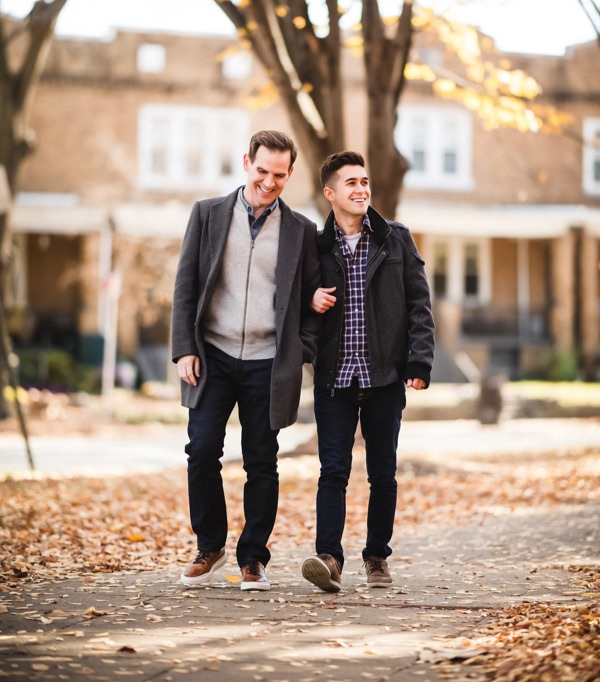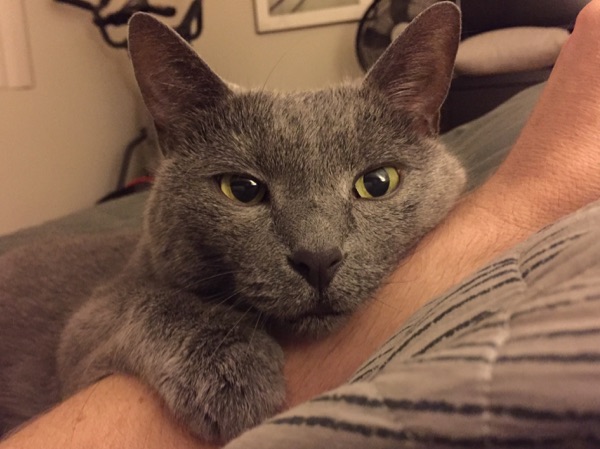Jan. 6 insurrection a game-changer for news literacy educators
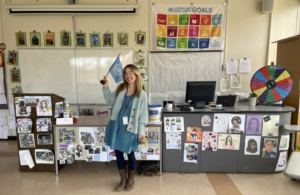
Photo credit: Molly Boyle
The insurrection at the U.S. Capitol on Jan. 6, 2021, was a watershed moment for high school teacher Anne-Michele Boyle.
Until then, she’d spent only a few days teaching media literacy to students in her Global Citizenship course. But when she and her students watched events unfold live during remote learning, she immediately reworked her curriculum.
“I scrapped my entire lesson plan for February and devoted that month to media literacy,” recalled Boyle, who also teaches AP World History at Whitney M. Young Magnet High School in Chicago. “January sixth illustrated to me how fragile democracy is and how dangerous misinformation can be.”
After the uprising, Boyle spent months developing a full media literacy curriculum for the roughly 90 juniors and seniors in her class. She now spends all of January — and often part of February —teaching this subject.
Inundated with information
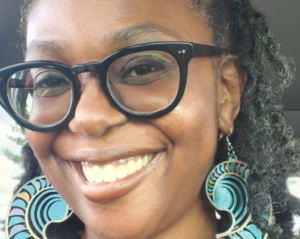 That same day in Mason, Ohio, Jocelyn Burlew was teaching seventh and eighth grade history online. As soon as her students logged in, they began asking questions about what was happening. “These questions paired perfectly with our study of the Constitution, particularly the powers of the president as well as our rights and responsibilities as we discussed the Bill of Rights,” she said.
That same day in Mason, Ohio, Jocelyn Burlew was teaching seventh and eighth grade history online. As soon as her students logged in, they began asking questions about what was happening. “These questions paired perfectly with our study of the Constitution, particularly the powers of the president as well as our rights and responsibilities as we discussed the Bill of Rights,” she said.
She, too, saw an opportunity to provide her students with a news literacy lesson in real time, noting that they were inundated with videos, memes, news stories, eyewitness accounts and more.
“We had to slow down and really start to analyze what we were seeing and hearing, and then take what we knew about the Constitution, the role of the media, as described in the First Amendment, to really start to grasp what was happening and understand the difference between types of information and how to vet it,” said Burlew, a news literacy ambassador for the News Literacy Project, who teaches in the Mason City School District in suburban Cincinnati.
She uses NLP’s educator newsletter The Sift® and the Checkology® e-learning platform to weave news literacy into her classes. “I initially used Checkology’s ‘InfoZones’ lesson to introduce my students to the various types of information they may come across. I then used these concepts in their study of ancient Athens and Sparta.”
That foundation helped them better understand the uprising and the role of a free press in a democracy. She hopes her students take away from her class the understanding “that we have to be thoughtful and critical consumers of media and hold news outlets to the standards of quality journalism.”
Students share what they learn
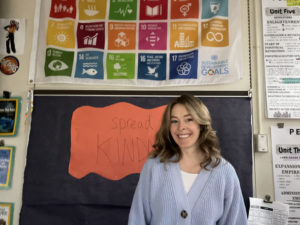
Photo credit: Molly Boyle
To keep her course current, Boyle forgoes a textbook and brings in new resources each year. She also uses educator resources on NLP’s website to help students build essential skills, including lateral reading, reverse image searches, evaluating sources and geolocation.
“We examine the extent to which the sources we use adhere to standards of quality journalism, why standards matter and why journalists have a lot to lose if they don’t follow those standards. We compare this to the news posts students see on TikTok,” she said.
Boyle also teaches Checkology’s “Misinformation,” “Conspiratorial Thinking” and “Understanding Bias” lessons.
As her students begin to recognize the real dangers of misinformation they can act on their knowledge. For example, as part of a final project, some students created news literacy quizzes on the game-based learning app Kahoot! for family get-togethers. They wanted to teach older relatives how to spot conspiracy theories on social media and to recognize mis- and disinformation. “They’re taking the skills they learn and reaching more people,” she said.
And she’s watched their understanding of the problem evolve. “Before we started the [media literacy] unit, most did not realize how scary January sixth was. It is essential for all people to understand the connection between having a strong democracy and strong media literacy skills.”
Personal impact
Burlew has had similar experiences. “In general, students love having the knowledge and power to debunk what they see and hear.”
And for Boyle, the insurrection also had a personal impact. A month prior she had applied to the Fulbright U.S. Scholar Program. Immediately after that day she got permission to resubmit her application with a new focus on a plan to improve media literacy. She won the fellowship.
Both educators want their students to recognize the value of their newfound skills. “First and foremost, media literacy is absolutely essential to a strong democracy. Period,” Boyle said.
2022, the year in misinformation: News literacy takeaways
2022 Misinformation Year in Review
In 2022, misinformation continued to spread on social media and make its mark on the news cycle. From “cheap fakes” to miscaptioned videos to conspiratorial claims and rumors made entirely out of whole cloth, we review some of the biggest misinformation claims of the year and offer tips on how to better navigate social media in the new year.
1. Breaking news rumors
Even during the earliest stages of Russia’s invasion of Ukraine in February 2022, propagandists swarmed social media to muddy the waters and alter the narrative. The driving focus behind many of these rumors was to downplay the severity of the attack by claiming the war was somehow faked or staged. Social media posts used miscaptioned news footage and altered news reporting, and behind-the-scenes movie footage that had nothing to do with the war to support the false claims.
Other purveyors of misinformation took a different approach, connecting the conflict to a wide range of conspiracy theories, including that Ukrainian President Volodymyr Zelenskyy was related to billionaire George Soros and that the United States was operating secret biolabs across Ukraine. Video game footage was also passed off as “shocking” evidence of military attacks, and a spate of rumors amplified Russian disinformation narratives, including false claims that the Ukrainian resistance is made up of Nazis.
NewsLit takeaway: Breaking news events — especially those that occur in foreign countries and during chaotic times in which information is scarce and the situation is in flux — provide ample opportunities for purveyors of misinformation to spread false claims. Russia, arguably the world’s leading producer of disinformation, has a strong interest in manufacturing confusion and doubt about its invasion. Be cautious about sharing information during breaking news cycles before it has been confirmed by credible sources.
2. Anti-vaccination falsehoods
The COVID-19 pandemic led to a rise of anti-vaccination sentiments that persisted in 2022. Vaccine denialist narratives that were prominent in 2020 and 2021 gained more mainstream traction as they were amplified by celebrities and repackaged into slick pseudo-documentary films. While many of the anti-vaccine rumors that circulated in 2022 were simply rehashed versions of previously debunked claims — a nonexistent increase in athletes collapsing, bogus claims about vaccines altering DNA, misattributed celebrity deaths and a false depopulation theory — their prevalence and proliferation meant that health misinformation continued to spread.
NewsLit takeaway: Anti-vaccination rumors infected a wide range of communities, from alternative health and wellness groups seeking “natural” remedies to anti-government followers opposed to regulations and mandates. These false rumors (like many conspiracy theories) appeal to people because they seem to provide answers during times of uncertainty, but they merely shelter people from the truth. Seek out health information from credible sources, such as the Centers for Disease Control and Prevention and the World Health Organization.
3. Election fraud allegations
Ripples from the “Big Lie” of the 2020 presidential election continued to reverberate into the 2022 midterm contests. Some social media users repackaged familiar tropes — exaggerating mundane technical problems, misrepresenting the actions of poll workers, and spreading baseless lies about election laws — to cast doubt on the process and results.
NewsLit takeaway: Despite the false claims, very few cases of voter fraud occurred during the midterms. And election fraud falsehoods didn’t have the same impact as in 2020. One reason for this may be the rise of “prebunking” — or identifying examples of rumors that users are likely to encounter as an event approaches. The News Literacy Project produced this infographic to alert people about the types of rumors they would likely see during the midterms.
4. Economic conspiracies
The world in 2022 continued to experience interruptions in the supply chain that contributed to food and product shortages and inflation, while demand and supply imbalances led to higher gas prices. The effects of Russia’s war in Ukraine and the COVID-19 pandemic rippled throughout the global economy as well. Some social media users exploited the issues by catastrophizing their impact and spreading falsehoods about their causes. Alarmist falsehoods politicizing shortages in infant formula circulated, as did baseless claims that the U.S. was on the brink of running out of diesel fuel. Conspiracy theorists also pushed absurd claims that a government cabal was intentionally causing shortages — by representing videos of crops being burned or cows dying in a heat wave to contend these resulted from deliberate state actions.
NewsLit takeaway: Partisans and conspiracy theory communities often spin and exaggerate real world events to fit their own agendas. Following standards-based news organizations on social media can help mitigate the spread of these misleading takes. Practicing lateral reading also helps avoid conspiratorial rabbit holes.
5. Altered audio
One popular form of misinformation in 2022 involved genuine video clips with unrelated pieces of audio added to them. Anti-Biden chants and jeers were added to videos of first lady Jill Biden at a football game, former President Barack Obama at a rally, and President Joe Biden during a visit to London for Queen Elizabeth II’s funeral. Digital software capable of impersonating celebrity voices was also used to spread misinformation, such as this doctored video of former President Donald Trump appearing to praise Ye, the artist formerly known as Kanye West, shortly after West showed support for Nazis, and this video of Elon Musk seeming to mock “crybaby liberals” shortly after taking over Twitter.
NewsLit takeaway: Deepfakes tend to attract attention, but purveyors of misinformation also can create quick and convincing videographic fakes with simple manipulations of context, or by merely swapping out the audio. These altered videos can be detected by tracking down the authentic source footage, but it’s a step few people take as they scroll through their feeds, especially when the message resonates with their existing views and biases.
6. Fake litter boxes and anti-transgender claims
One of the biggest stories of the year never happened. A baseless, transphobic internet falsehood about (nonexistent) schools accommodating (nonexistent) students who “identify as cats” made its way into school board meetings as secondhand anecdotes, then were amplified by right-wing podcasters and pundits. Influential podcast host Joe Rogan, for example, shared a claim on his show that his friend’s wife worked at a school that was forced to install such a litter box to accommodate a student; he later retracted the story because there was no evidence that it was real. Litter boxes quickly became a modern-day urban legend.
NewsLit takeaway: Confirmation bias can be incredibly powerful. The right-wing media ecosystem regularly highlighted controversies over transgender people using bathrooms, competing in sports and choosing their own pronouns. Anger and fear over this issue intensified in some partisan circles and paved the way for implausible scenarios (a school installing a litter box for a child to use instead of a bathroom) to be credulously believed and repeated as a political talking point. Be sure to check other sources of credible information before sharing a viral or controversial post.
7. Flat Earth and climate-change lies
Even as NASA’s James Webb Space Telescope captured images of distant galaxies, social media users were busy spreading rumors that the Earth was flat. Even more disconcerting, there was a general rise in climate misinformation in 2022, including false claims maligning electric cars, a fabricated magazine cover that indicated climate change is a hoax and accusations that the media was doctoring weather maps to sow panic.
NewsLit takeaway: Misinformation relies on the rejection of credible and authoritative sources. This is exemplified in the flat Earth conspiracy theory and, more importantly, in the rejection of overwhelming evidence of Earth’s changing climate. To follow climate change developments, seek out information from standards-based news organizations and credible science sources.
Making the connection between media literacy and democracy
From the perspective of 2022, Mary Robb and her colleagues look like fortune tellers. Back in 2001 — before 9/11 conspiracy theories, viral memes and QAnon — the educators created a Democracy and Media Literacy course.
“We were teaching civics and figured it made no sense to teach students how to be citizens without teaching them how to navigate the media,” recalled Robb, who teaches social studies at Andover High School in Andover, Massachusetts.
She and her fellow teachers began by giving students a strategy for evaluating the credibility of news and other content borrowed from another colleague, Kathryn Reusch. It’s called WAIL:
- W: for the most powerful words use in an article.
- A: for adjectives and adverbs and what they might indicate about bias.
- I: for the information included.
- L : for the information left out.
“We want to help students become active rather than passive news consumers. What they learn in our class they use every single day,” Robb said.
Senior Nicholas Leonard, who took the class last spring, said learning to analyze news articles has helped him think more critically. “We’d take a story and break it down— right wing, left wing and centrist sources — and then piece the story together to get to the facts. We stripped away the bias.”
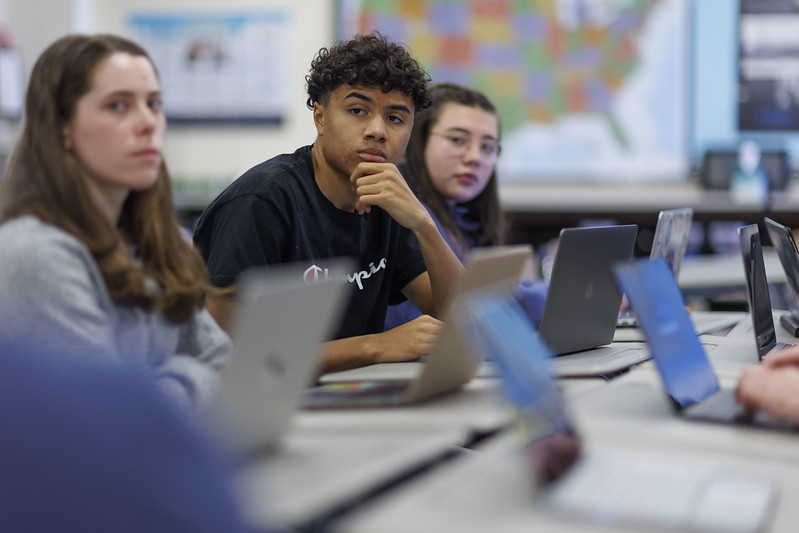 Among the resources Robb and her colleagues use to keep the classwork relevant and engaging is NLP’s free weekly newsletter for educators, The Sift®. “It’s this wonderful, serendipitous situation. We’ll be discussing a topic, say voter fraud, and you’ll have a piece on the topic,” she said. “We’ll use The Sift to understand the necessity to be mindful consumers of news, to pause to think.”
Among the resources Robb and her colleagues use to keep the classwork relevant and engaging is NLP’s free weekly newsletter for educators, The Sift®. “It’s this wonderful, serendipitous situation. We’ll be discussing a topic, say voter fraud, and you’ll have a piece on the topic,” she said. “We’ll use The Sift to understand the necessity to be mindful consumers of news, to pause to think.”
The students go through The Sift item by item, pausing after each one to write down their thoughts. “Now it is second nature. They are much more mindful news consumers,” she said.
Meaningful conversations
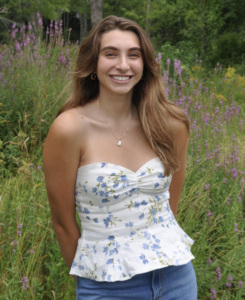
Senior Siham Berty took Mary Robb’s Democracy and Media Literacy course last year and said, “she made sure we had access to a wide range of sources, so we always felt like were getting the truth. And we felt like we could voice our opinions.”
Senior Siham Berty took Robb’s class last fall and said she now looks at information differently. “If you asked me a year or two ago, I was 10 times more likely to believe what I saw on social media. Now I take it with pinch of salt. I don’t look at the first thing Google gives me. I go through other news sources.”
One of Berty’s favorite elements of the course was the meaningful interaction with other students. “Her (Robb’s) class really focuses on group discussion. She made sure we had access to a wide range of sources, so we always felt like were getting the truth. And we felt like we could voice our opinions.”
Leonard said that interaction was useful in other ways as well. “I think it really helped in finding common ground. We’d research a story, then break off into groups and come together and talk about it. I think that really helped in promoting compromise and understanding.”
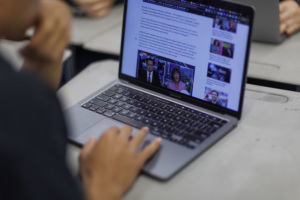 The discussions were vital to understanding the Jan. 6, 2021, uprising at the U.S. Capitol. “We had to talk about it because of all the attempts to spin the events. Some of them (the students) got angry at that,” Robb said.
The discussions were vital to understanding the Jan. 6, 2021, uprising at the U.S. Capitol. “We had to talk about it because of all the attempts to spin the events. Some of them (the students) got angry at that,” Robb said.
She asked students how they heard about the riots and reacted to the news. Then she had students apply the WAIL process to the information they consumed. They realized how different the facts about the event could be, based on the accounts they read. They also broke into groups where students of all political stripes felt comfortable and empowered to speak, Robb said.
To help students understand the impact of social media on their lives, they are asked to take a break from all platforms for one school week. They keep track of what it’s like to be offline each day. Not surprisingly, some feel like they are missing out on what other kids are talking about. But others notice differences in themselves. One student told Robb, “I feel much more calm.” Another said, “I feel more in charge of my thoughts.”
Media literacy and civic engagement
Leonard, who also works as a videographer for the town of Andover recording public meetings and events, considers himself civically engaged. But he said the class strengthened his desire to become even more involved. “I think it made me want to be more engaged. It’s made me aware of people who didn’t have a voice. I want to be politically active and make a difference.”
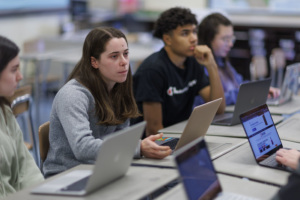 By the end of the semester, students have the confidence to share what they’ve learned outside of class. Leonard has done so in conversations with his parents about politics. “They might mention something, and I’ll say, ‘Oh, where did you get that,’ and we will look at it together,” he said.
By the end of the semester, students have the confidence to share what they’ve learned outside of class. Leonard has done so in conversations with his parents about politics. “They might mention something, and I’ll say, ‘Oh, where did you get that,’ and we will look at it together,” he said.
And the learning doesn’t stop at the classroom door. Students get extra credit when they do community service, attend a municipal meeting or volunteer at the polls on Election Day. One year, 30 of Robb’s students volunteered in some form. “They were so passionate,” she said.
That passion for civic responsibility endures. “I’ve gone to vote and seen students I had five or six years earlier. They say, ‘Of course, I vote.’ That is so encouraging,” she said.
Podcast special | “Sandy Hook at 10: Tragedy, Conspiracies and Justice”
On Dec. 14, it will be 10 years since a gunman walked into Sandy Hook Elementary School in Newtown, Connecticut, and killed 20 first graders and six adults. Soon after, conspiracy theories calling the massacre a hoax emerged. And they have persisted for a decade, thanks to amplification and profiteering by “alt-right” media figure Alex Jones.
In a special two-part episode of our podcast Is that a fact? — “Sandy Hook at 10: Tragedy, conspiracy theories and justice” — we explore the aftermath of the shooting and how what seemed like an aberration of untruths would instead develop into a bellwether for a shift in public discourse, with conspiracy theories becoming a common element of tragic events. We also discuss how victims’ families have fought back against the lies and harassment and brought about lasting change.
‘Typhoid Mary of the Sandy Hook hoax’
In part one, Elizabeth Williamson, a feature writer with The New York Times and author of Sandy Hook: An American Tragedy and the Battle for Truth, explains the incomprehensible need to deny reality and the lucrative market that exploits people’s vulnerability. “He is a sort of a Typhoid Mary of the Sandy Hook hoax,” Williamson said of Jones. She noted that he “has been there at every stop along our descent as a nation down the rabbit hole.”
A father fights back
In part two, we speak with Lenny Pozner, father of Noah, the youngest victim at Sandy Hook. Pozner knew early on that the hoaxers’ movement would be widespread, lasting and harmful. So, he chose to fight back on behalf of his child and other victims. “Noah’s story will always need to be told because there’ll always be someone misusing it,” he said. “I knew that I needed to do everything that I’m able to do to help debunk, to help clarify, to tell my story as best as I can, which really is just telling Noah’s story.”
We hope you’ll listen to these compelling interviews and share them with your community, helping to make sure facts and evidence are front and center in these conversations.
For more insightful interviews about misinformation, news literacy and society, be sure to check out the first two seasons of Is that a fact?. Season One analyzes misinformation and elections, and Season Two addresses false narratives and the harm they cause.
A decade after Sandy Hook, progress through the pain
On Dec. 14, 2012, a gunman walked into Sandy Hook Elementary School in Newtown, Conn. and, within minutes, ended the lives of 20 first-graders and six adults.
In the decade since that day, grieving families have had to contend with conspiracy theorists – egged on by “alt-right” radio host Alex Jones and others – who believe the shooting never happened and the victims never existed.
To help make sense of the incomprehensible need some people have to deny reality, and to learn how to successfully fight disinformation spreaders like Jones, I recently turned to New York Times feature writer Elizabeth Williamson, author of Sandy Hook: An American Tragedy and the Battle for Truth. I also spoke with Lenny Pozner, whose six-year-old-son, Noah, died in the shooting and became a particular point of obsession for those who deny the tragedy.
Williamson and Pozner helped trace the origins of the mass delusions a dispiriting percentage of our fellow Americans now seem to be under, and detailed the emotional journey of what it takes to fight against conspiracy theories – and win gains. Surprisingly, these conversations also left me feeling hopeful about a future where we are all more responsible consumers of news and information.
What makes Jones so dangerous
Jones began denying the Sandy Hook shooting within hours through his widely popular broadcast. Shockingly, Williamson confirmed that even today, multiple credible surveys show that one in five Americans now believe all mass shootings are hoaxes.
Williams said Jones helped drive this through his broadcasts, which draw an audience of tens of millions of devoted fans. A few different elements make his messages particularly potent, dangerous – and lucrative. One key strategy, Williamson said, is that Jones taps into the strong sense of community among conspiracy theorists and uses that to mobilize people.
“He deputizes his audience to fight back. In the case of Sandy Hook, they did that with confrontation and with threats of violence,” she told me.
Along the way, Jones has profited handsomely, casting doubt on COVID –19 vaccines while selling quack cures, for example.
“He stokes all of these fears and then he is offering a product as a solution,” Williamson said.
Harm – and progress
These examples show how conspiracy theories and hoaxes can end up affecting all of us. For Pozner, the force of mis- and disinformation consumed his whole life.
Immediately after the Sandy Hook shooting, online “hoaxers,” as Pozner calls the hordes of truth-deniers, questioned everything about Noah’s life and his death. Despite the emotional pain it caused him, Pozner dedicated himself to setting the record straight – from correcting seemingly small errors of fact on legacy news websites to tackling much larger conspiracy theories on social media sites and blogging platforms. For those efforts, Pozner’s family and other Sandy Hook victims received death threats sent to their homes.
In the face of immense loss, Pozner and the family members persevered in their defense of facts – and they have notched significant wins. Perhaps that’s why, even on this otherwise heart-wrenching anniversary of the shooting, I choose to see progress through the pain.
Jones recently lost three defamation lawsuits filed by victims’ family members and has been ordered to pay almost $1.5 billion in damages, with one more trial outstanding. Pozner – through the work of his nonprofit, the HONR network, and through the advocacy of others – has convinced major tech companies such as Facebook and WordPress to change their policies and terms of service to better protect the next of kin of major tragedies, and crack down on hate and harassment.
How to push back against conspiracies
But we can’t rely on the victims of tragedies to do this work alone, and certainly not while they are also grieving their losses. Ten years after Sandy Hook, they don’t have to.
Organizations like the News Literacy Project, where I work, are helping news consumers learn how to tell fact from fiction, identify credible sources, and actively push back against misinformation. Evidence increasingly suggests that these types of efforts can help inoculate people from being misled, which gives me hope.
We can all become news-literate and guard ourselves against conspiracy theories by understanding how they work. Be on the lookout for messages that push cynicism in institutions, connect random facts into supposedly meaningful patterns, and are impossible to prove no matter the evidence that’s presented. When you come across a strange or dark claim online, apply critical thinking and turn to a range of credible sources to help fact-check it
By practicing these skills, and encouraging others to do the same, we can create a movement in support of a more factual future. Let that also be a legacy of Sandy Hook.
Darragh Worland is the host of the News Literacy Project’s podcast, Is that a fact?, which recently released a two-part series about the Sandy Hook shooting and the conspiracy theories that followed.
Helping students lead productive conversations this holiday season and beyond
For those celebrating holidays this season, it can be a joyful time to get together with loved ones. However, navigating conversations with family and friends — especially any who have been misled by mis- and disinformation — can also be stressful.
Educators can help students develop the skills to confidently manage these situations, and understand and debunk misinformation they may encounter, using resources from the News Literacy Project in their lesson plans. Below is a curated selection of lessons, exercises and articles that can be useful to integrate into a middle or high school news and media literacy curriculum.
Start with our article and infographic “How to teach news literacy in polarizing times” for strategies on how to approach issues such as partisanship and credibility.

Assign
Educators can help students analyze the information landscape by assigning lessons through our Checkology®virtual classroom. These suggestions — just three of the platform’s 18 lessons for grades 6-12 — help students understand misinformation, spot conspiracy theories and discover the primary purpose of individual pieces of information.
Assign these and other media and news literacy lessons in just a few clicks. (It’s free!)
Supplementary Exercises
By assigning supplementary Checkology exercises, challenges and missions, educators can help improve students’ recognition of misinformation and strong evidence. (A free Checkology account is required to assign these exercises; register now.)

Read
These articles provide some basic skills for recognizing misinformation and confronting it — plus, they include helpful infographics for visual learners.
Discuss
Check out our collection of topics on Flip, packed with relevant classroom activities and discussion-starters. The topics below cover how to conduct conversations with empathy and respect, how to share information responsibly online and more. (Note: To add topics to a group, be sure to create a Flip account.)
- Flip topic: How to (respectfully) speak up
- Flip topic: Take care when you share
- Flip topic: Don’t just react. Reflect!
By teaching classes how to apply critical thinking and news literacy skills in their lives, you’ll equip students with the ability to identify fact from fiction — an invaluable gift during the holiday season and beyond. A great starting point (especially if you are looking to fill shorter, end-of-semester days) is Checkology; get started today!
Ambassador Connections: Meet Deborah Domingues-Murphy, Pittsburgh, Pennsylvania
Deborah Domingues-Murphy, library media specialist
Pittsburgh, Pennsylvania
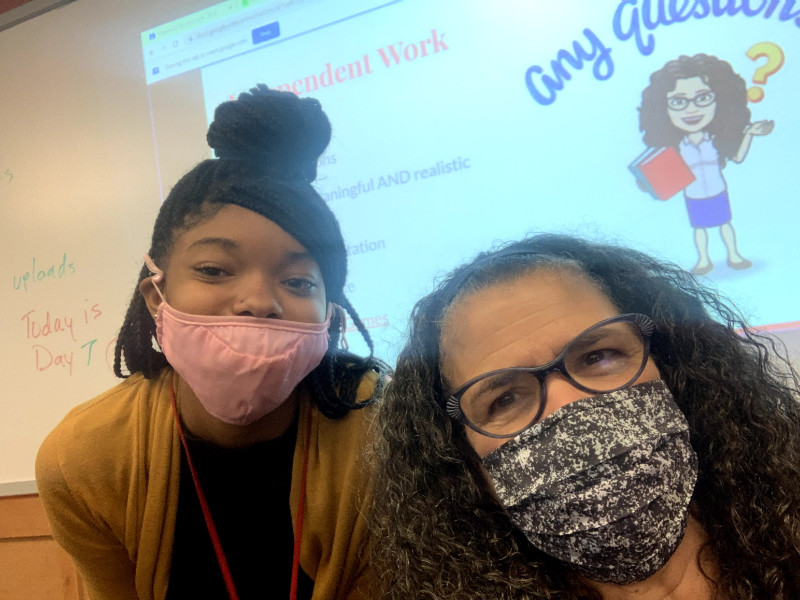
1. As a NewsLitNation ambassador, you clearly are committed to news literacy education. What drives that commitment?
My grandmother was a naturalized citizen. She taught all of us from a young age to be active in our civic duties, especially when it came to voting. She participated in every election from the time she received her citizenship well into her 100s. She read up on the candidates and the issues. She had ongoing correspondence with all the presidents dating back to Eisenhower up to the Clinton administration. I want my students to want to be involved in their community, hold our elected officials accountable. To do that, they need to know what is happening and that requires them to be smart consumers of news information.
2. What is your favorite tool or tip for teaching news literacy?
I use a lot of NLP materials. Two of my “go-tos” are the RumorGuard images and Checkology. I use the RumorGuard images to see how well my students can discern the accuracy of the image. They are learning how to apply the five factors for credibility: authenticity, source, evidence, context, reasoning. The other is Checkology, it is so adaptable. I can use lessons as part of direct instruction as well as assign a number of them to extend learning. The fact that the lessons are self-grading makes implementing it so easy.
3. These are particularly challenging times for educators. What has been your go-to de-stressor?
In my class, I try to bring in some mindfulness exercises and practices. I have set routines in my class and start each class period with 5 minutes of silence. Students have told me it is the only time in the day they don’t feel stressed out. One described it as finally breathing, not feeling like he is always holding his breath. For me personally, I also do mindfulness exercises that include guided meditation and yoga. I also do watercolors and knit.
4. Design your own student questions for an event relevant to your region.
Pennsylvania is frequently a battleground state. As a result, there is a lot of disinformation and misinformation. We are bringing the NLP PitchIt! contest to Pennsylvania. Working with the school district (Allegheny Intermediate Unit), we want to give students a platform to write an evidence-supported essay about the topics of a free press and news literacy.
 5. Aside from fighting for facts, what else are you passionate about?
5. Aside from fighting for facts, what else are you passionate about?
I never pass up on an opportunity to go to new places. I love learning about different cultures, eating local foods, seeing amazing sites.
6. Are you on team dog, team cat, team wombat?
Team dog all the way (although wombats are a close second)
In spring 2023, NLP will be looking for more ambassadors to join our movement. Interested? Contact [email protected] for more information.
Annual report celebrates NLP’s successes and helps chart the way forward
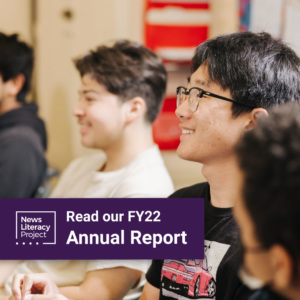 Today, we’re releasing our annual report, and we are proud of our achievements in classrooms around the country, in our work with the public, and in our significant progress toward a more news-literate America. The report, which covers fiscal year 2022 (July 2021-June 2022), also highlights what we’ve accomplished during our ambitious four-year strategic plan for expanding our reach and impact, which concluded in June. While challenges remain, with your ongoing support, we know we can succeed.
Today, we’re releasing our annual report, and we are proud of our achievements in classrooms around the country, in our work with the public, and in our significant progress toward a more news-literate America. The report, which covers fiscal year 2022 (July 2021-June 2022), also highlights what we’ve accomplished during our ambitious four-year strategic plan for expanding our reach and impact, which concluded in June. While challenges remain, with your ongoing support, we know we can succeed.
Read the report here.
By Greg McCaffery and Chuck Salter
This past year, the world has contended with devastating crises that were exacerbated by the proliferation of mis- and disinformation — which further undermined democracy. Steadfast throughout these challenges were educators, journalists, students and young people — ordinary heroes who stood firm in upholding our shared democratic values, including the importance of a free press and fact-based public discourse. That’s why we are hopeful about a common future founded on facts. And you’ll see the rationale for that hope in these pages. Just consider what we’ve achieved together over the past year:
With your support, more than 16,000 educators (a 20% increase over the previous year) used any number of our free resources to serve an estimated 2.4 million students in all 50 states.
We created more content for our Checkology® virtual classroom than ever before, including a three-part science component that explores how to get data-savvy, evaluate science-based claims and identify health misinformation.
We launched a lesson on editorial cartooning that features political cartoonists explaining the importance of this form of opinion journalism. Additionally, we are developing a lesson for release in early 2023 that explores the roots of distrust of the news media and “expertise.”
We dropped a new season of our podcast Is that a fact?, where we explored the origins of false narratives and the harm they cause. And our third annual National News Literacy Week, in partnership with The E.W. Scripps Company, reached over 48 million people across the nation, encouraging them to “stop the flood” of misinformation while underscoring the vital role of news literacy in a democracy.
We also successfully concluded our four-year strategic plan, a journey you took with us to help NLP reach national scale.
We hope in these pages you feel pride in the accomplishments we’ve made and take heart in the stories of our educators and students. Your interest in, partnership with, and championing of NLP have made our work possible. Now we set out to transform our mission into a national movement in the pursuit of a more civically engaged, information-savvy America. And we hope you will continue to stand with us as we harness your individual energy into a collective strength that ensures a more robust, equitable democracy for generations to come.
NLPeople: Ebonee Otoo, senior vice president of educator engagement
Ebonee Otoo, Dallas, Texas
This is part of a series that introduces you to the people behind the scenes at the News Literacy Project.
1. Can you tell us what brought you to NLP?
NLP was the perfect marriage between my background in journalism and love for education. I was working for the Office of the State Superintendent of Education in D.C. when a former colleague told me she saw a role I’d be perfect for. I applied the same day. Between my applying and getting the job, the pandemic began. I thought it was surreal to work for this cause in 2020 during the middle of the perfect storm of misinformation: the COVID-19 pandemic, a contentious election and a racial uprising following the death of George Floyd. I knew immediately I’d made the right, and most necessary, choice for such an unprecedented time.
2. How has your background as a coalition builder and community engagement expert influenced your work at NLP?
I’m proud to have spent my career working for causes I’m passionate about. I have worked with some of the best coalition builders in the country. Throughout my career, building and working directly with the community, I’ve learned that it’s important to listen to what the people want. If you pay attention, communities know what they need. My background has given me the courage to believe in the power of communities. I see value in every educator we encounter, and I am eager to co-create a future with them that we can both be happy to live in.
I’ve learned that people don’t need to be empowered. They have power. They often don’t have the resources to harness that power. That is where NLP comes in. We offer support, training, resources and a community platform that enables educators to teach the skills learners need to know. Now that is a lot of power!
What I love about my work at NLP is that I get to listen to educators and help meet their needs. We are a solution to a problem they’re facing every day. I can’t think of a better way to spend my life than building a movement of educators passionate about creating a more news-literate nation.
 3. Aside from fighting for facts, what else are you passionate about?
3. Aside from fighting for facts, what else are you passionate about?
I’m passionate about mentorship. I have been mentoring since 2013. Being a mentor is an important part of my personal ideology for a life of service. There is a lot of evidence that correlates mentoring with positive outcomes for young people. And since I’ve benefited so greatly from mentors, it’s only fitting that I extend that same opportunity to someone else. I recently traveled with a mentee to Ghana in June 2022. It was her first time in Africa. We visited several parts of the country, including the slave castles on the coast. It was one of the most memorable trips of my life, and I think the same is true for her.
 4. Are you on team dog, team cat, team wombat? Or do you prefer stuffed animals to pets?
4. Are you on team dog, team cat, team wombat? Or do you prefer stuffed animals to pets?
While I love cats, I’m team dog. I have a pandemic puppy named Psalm. She’s a small land shark, but we’ve braved the last year and a half together.
5. What item do you always have in your fridge?
BBQ sauce. I put it on everything.
More election resources to help you stay informed, not misled
We’re just a couple of weeks from Election Day. In many states, early and mail-in voting is already underway. We have created a few more resources to help you stay informed – not misled – as we enter the final stretch of election season. Be sure to check out NLP’s original Election 2022 page, where you’ll find videos, infographics and more to help you avoid election misinformation.
Infographic: Three types of election rumors to avoid
Bad actors push election disinformation designed to cause confusion and undermine confidence in American democracy. The same false claims tend to get recycled year after year, which can make them easier to spot.
We created this infographic that breaks down false “ballot mule” accusations as well as rumors about poll workers and mail-in voting. We’ve also included tools and tips for protecting yourself against these and similar bogus election claims with links to credible sources.
Download the digital version here (perfect for linking in an email or on social media).
Download the print version here (perfect for in-person discussions or teaching events ahead of the election or giving to a family member who prefers to read it on paper).
Partner blog: Prep for the U.S. midterm elections with these online tools
We’ve partnered with Mozilla to help people prepare to vote in the midterms.
“As an organization that advocates for a healthy internet, we consider online misinformation to be a huge barrier to seeing that better internet,” Mozilla writes. The post also has information about how to check your voter registration and what’s on your ballot. Read it here.
We recently curated a Pocket collection of must-reads ahead of the election. We explore what’s being done and what still needs to be addressed to ensure the integrity of our elections. Check it out here.
More expert videos: Protecting yourself from disinformation
We talked with Bret Schafer, a senior fellow at the Alliance for Securing Democracy, about his work tracking online conversations about the election. He explained how foreign actors are interfering in the American electoral process by exploiting divisive topics to sow domestic discord.
“They’re not trying to insert something new into a conversation that Americans aren’t already talking about,” he said.
Schafer also offered tips for protecting yourself against election misinformation that spreads on social media.
“Go to multiple trusted sources, and that’s usually the best way to defend yourself,” he said.
Schafer was one of four experts we spoke to ahead of the midterms who helped us understand the common types of election misinformation to watch out for and how to protect ourselves from it.
The final weeks before Election Day can be overwhelming with political advertising at full pitch and lots of information flying around. Our resources to help you prepare to vote are always available at newslit.org/election2022.
NLP: With Sandy Hook ruling, Jones to suffer consequences of his lies
In response to a Connecticut jury decision that ordered conspiracy theorist Alex Jones and his company to pay at least $965 million to those harmed by his lies about the 2012 Sandy Hook mass shooting, the News Literacy Project released the following statement:
“There are few things more heinous than deliberately and repeatedly spreading conspiracy theories and false information about a mass school shooting where families lost loved ones. Yet, that’s what Alex Jones did and today a jury in Connecticut is making him suffer the consequences for his lies.
“Jones spread disinformation about the murder of young children and school officials at Sandy Hook Elementary School in Newtown, Connecticut, that caused the parents, loved ones and an FBI agent to be relentlessly harassed about the horrific tragedy. According to the Washington Post, ‘Within hours of the shooting, Jones was telling his audience that it was staged as a pretext for confiscating guns. Within days, he began to suggest that grieving parents were actors. In the years that followed, he repeatedly said the massacre was faked.’ He also used these outrageous claims for self-promotion — both to raise his profile and generate revenue.
“Now juries in Texas and Connecticut that heard all the details and defenses about the two cases have ruled against him and ordered him to pay more than $1 billion in punitive and compensatory damages. The message they sent is clear: Jones must be held accountable for spreading lies that led to the harassment of innocent and already suffering families and for distorting the national debate about one of the most urgent issues of our time. The enormous sum he must pay should serve as a deterrent to others who hope to profit from disinformation.”
‘Unite around facts’
“At NLP, our work is dedicated to helping people learn how to recognize fact from fiction. We are dedicated to stopping the spread of mis- and disinformation by providing free resources to prevent people from falling for conspiracy theories and to help them gain the skills to determine the credibility of information sources. This verdict is a major victory for those who want to unite around facts and credible information in people’s lives, and it is a bright spot in the often overwhelming fight against misinformation. We can all rest a bit easier with the knowledge that at least some purveyors of lies and disinformation who seek personal gain at the expense of the public good will be held accountable.”
Stop falsehoods in their tracks: Join the RumorGuard
The News Literacy Project is encouraging everyone to push back against misinformation with its new platform, RumorGuard, which helps you know what’s safe to share and which rumors should be stopped in their tracks. It cites topical viral rumors and lays out exactly how the public can determine that a claim doesn’t hold weight, based on five factors for credibility.
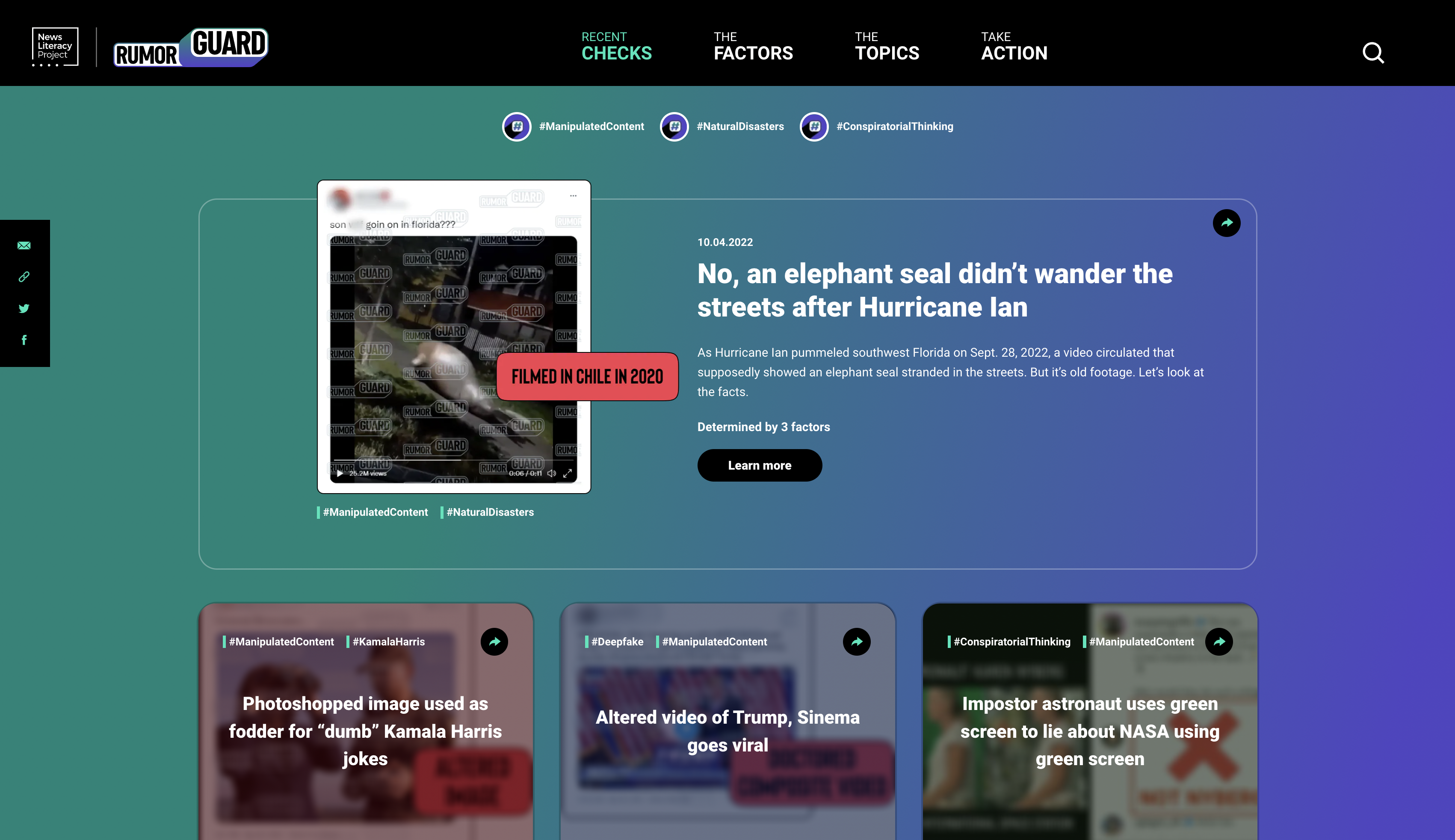
The RumorGuard homepage.
Exploring RumorGuard
The platform covers all types of misinformation and categorizes it by topic, from manipulated content or engagement bait to pressing issues like climate change and politics.
NLP also built RumorGuard as the foundation for a common future founded on facts. The platform goes beyond traditional fact-checking and source verification by using debunked hoaxes, memes and other misinformation as the starting point for learning news literacy skills.
The five factors
Each RumorGuard post takes readers through the facts behind a specific viral rumor, then breaks down the five factors that can be used to verify any claim:
1. Authenticity: Is it authentic?
2. Source: Has it been posted or confirmed by a credible source?
3. Evidence: Is there evidence that proves the claim?
4. Context: Is the context accurate?
5. Reasoning: Is it based on solid reasoning?
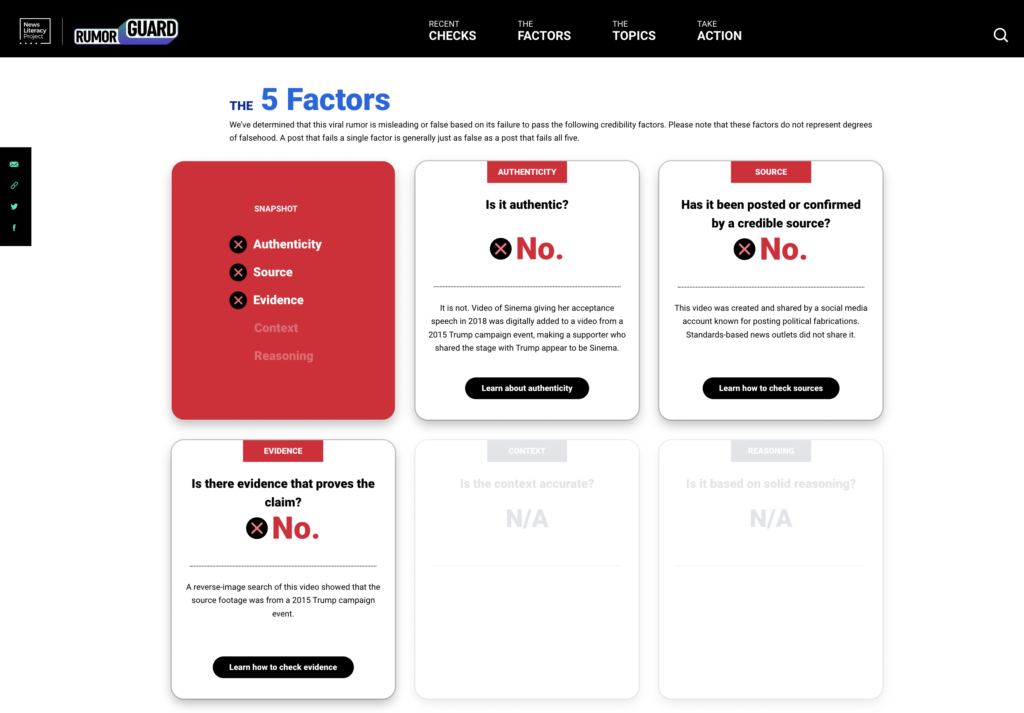
This rumor failed to pass three of the five credibility factors: Authenticity, source, and evidence.
These factors connect users with sources and opportunities for learning and strengthening news literacy skills.

Learn and practice techniques to check reasoning.
NLP also encourages everyone to join the RumorGuard and act for facts by subscribing to our weekly newsletter, which debunks viral rumors. Then, share what you’ve learned with the wider community.
All of us can become well-informed and learn the skills to stay well-informed with RumorGuard, the newest addition to NLP’s comprehensive news literacy resources.
News Literacy Ambassador Program welcomes six new educators
The News Literacy Ambassador Program is a national initiative to mobilize educators in the fight against misinformation and is a key component of NLP’s NewsLitNation, a network of news literacy educators. Ambassadors are essential to NLP’s effort to build a more news-literate nation, and, in turn, a more robust, equitable democracy.
Ambassadors work at the grassroots level in their communities, organizing colleagues and allies to help advocate for news literacy education. Their work is critical to turning NLP’s mission into a movement with a transformative impact on young people around the nation.
“Educators around the country often feel like they are alone in this journey, so being able to connect with a fellow educator who can relate to their experiences, knows the local education landscape and has the expertise needed to help them succeed helps empower and expand their capacity,” said Miriam Romais, director, NewsLitNation. “The ability to recognize credible information is a critical life skill, and in many areas of the country teachers lack access to quality teaching resources that are free and nonpartisan. We aim to help fill that gap.”
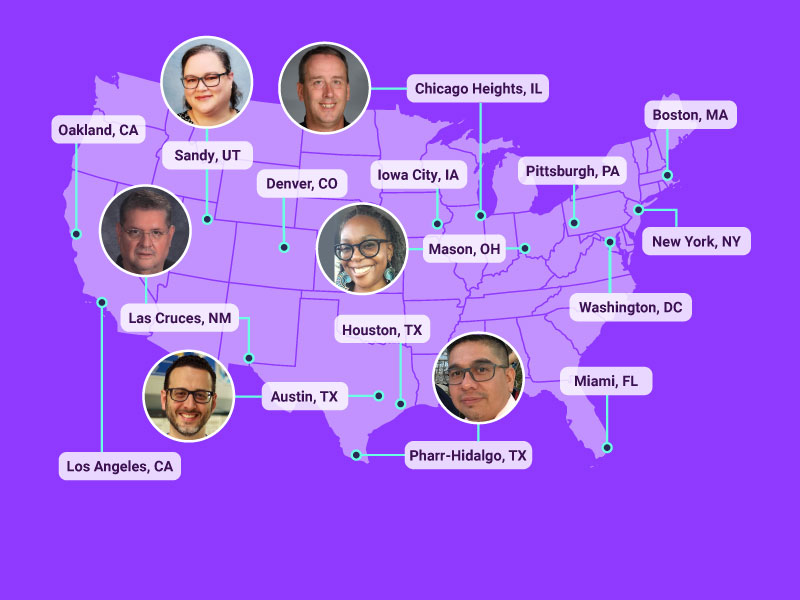
NLP has expanded this program to 16 ambassadors, recently welcoming six educators in key states from Ohio, Illinois, New Mexico, Texas and Utah.
Meet our new ambassadors below and visit NewsLit Nation to learn more about the entire group.
Juan Alvarado, high school ELA Educator, Texas
Juan was born and raised in San Luis Potosi, Mexico, and emigrated to South Texas with his parents in 1988. He teaches at Valley View High School in Pharr-Hidalgo, Texas, as an English, STEM and Pre-AP teacher. In 2017 Alvarado became the high school journalism and ready-writing coach, and one year later his students won the first-ever Academic District Championship title in journalism.
Juan Armijo, director of social studies, New Mexico
Juan teaches AP United States government, as well as politics and principles of democracy, at Mayfield High School in the Las Cruces Public Schools System. He has participated in the development of the new Social Studies Standards and Benchmarks (High School Civics) for the state of New Mexico and was part of the Materials Review Institute for the adoption of a new social studies textbook.
Jocelyn Burlew, learning experience designer, Ohio
Jocelyn uses culturally responsive practices to cultivate a classroom environment that places students at the heart of the learning process. She taught fifth grade English Language Arts and middle school social studies. She recently designed a middle school elective focused on digital, information and media literacy to help students become competent, literate, informed participants in society.
David Doerr, high school journalism and career and technology education teacher, Texas
David has taught journalism and career and technology classes in the Austin Independent School District since 2010, serving as a faculty adviser for student publications. He is the chair of the Texas Association of Journalism Educators’ Legislative Committee and Policy Committee. TAJE supports the efforts of scholastic journalism by providing conventions, contests and resources to teachers and students.
Lesli Morris, ELA teacher, Utah
Lesli is a high school ELA teacher and instructional system design specialist for Canyons School District in Sandy, Utah. She has taught high school in a variety of settings — from youth in custody to a National Blue Ribbon high school. One of her goals is to relentlessly promote diversity and pursue equity in education through access to quality curriculum and by supporting teachers with research-based instructional practices.
Sean Scanlon, director of curriculum, Illinois
Sean, who has a master’s in educational leadership, is the director of curriculum and instruction at Marian Catholic High School in Chicago Heights, Illinois. He created the Catholic EdTech Summit and hosted EdCamp Chicago. His passion is to help teachers integrate technology in ways that can engage students, while also helping them navigate the ever-shifting landscape of news literacy.
When, where and how do I vote? Get the facts from reliable sources.
Election Day is Tuesday, Nov. 8. Now is the time to make sure you have the facts about when, where and how to vote. When you search for information about the midterm elections, make sure you’re referencing reliable sources.
As part of the News Literacy Project’s campaign to help voters be informed – not misled – during election season, we spoke to several experts about how to avoid falling for common types of misinformation during the midterms.
“One classic example of misinformation is when to vote,” Ciara Torres-Spelliscy, a fellow at the Brennan Center for Justice and a law professor at Stetson University College of Law, told us. “So, typically we have elections on Tuesdays in America, but if you are targeting a certain group of voters with misinformation, the classic thing to tell them is that the election is on Wednesday.”
Atiba Ellis, a professor at the Marquette University Law School, told us that disinformation tactics regularly have been used in previous elections regarding how and when to vote.
“Flyers that say, ‘Election Day has been postponed for a week,’ or robocalls that inform voters that ‘Republicans vote on Tuesday, but Democrats vote on Wednesday,’ all of these things are forms of misinformation,” he said.
Torres-Spelliscy said the most reliable sources for information about upcoming elections are the officials who actually run them.
“If you have a question about when voting hours are or what types of mail-in ballots are accepted, then the soundest place to find that information is one of those sources from the elections officials that actually run elections,” she said.
The National Association of State Election Directors is the professional organization for the civil servants responsible for administering elections in every U.S. state and territory and the District of Columbia. It has a webpage where voters can find trustworthy links to information in their state, directly from the officials in charge of carrying out the election.
“Every state has information in terms of how Election Day is supposed to run,” Ellis said. “Probably most importantly, to verify that you are properly registered and you know where, when and how to cast your own ballot, check with the government as opposed to falling for anything that you hear over the internet,” he said.
States and territories have different deadlines for registering to vote, so check your registration now.
The League of Women Voters, a nonpartisan grassroots organization that encourages voter participation for all, put together a resource hub at vote411.org. There, you can verify that you’re registered to vote and find out what’s on your ballot.
And when it comes to avoiding misinformation, NLP’s 2022 election page is a virtual toolbox designed to help you spot misinformation and stop its spread. Be sure to sign up for our webinars, whichteach you how to find information from credible sources, spot election misinformation and engage in meaningful conversation with those who have fallen for it.
New STEM-Aligned Lessons Released on Checkology®
Educators asked, and we’ve answered! In response to requests for STEM-aligned lessons on Checkology®️, the News Literacy Project’s free, browser-based virtual classroom, we’ve added a trio of new lessons: “Evaluating Science-Based Claims,” “Be Health Informed” and “Making Sense of Data.”
These lessons support students’ understanding of science and math principles, such as evaluating methods and evidence. They also incorporate real-world issues such as climate change, the COVID-19 pandemic, vaccines, medical and scientific misinformation, pseudoscience and conspiratorial thinking.
Educators in the sciences, mathematics and social studies will find these new lessons particularly useful for drawing connections to current events and information students encounter online. The lessons also make valuable additions to subjects such as journalism and history, providing or enhancing foundational understandings of science and data literacy.
Learn more about each of the lessons below.
“Evaluating Science-Based Claims” boosts students’ science literacy

Scientific findings have shaped our entire world, from our methods of transportation to how we communicate with one another. Most people don’t question the science behind everyday conveniences such as cars and cell phones, but topics such as climate change – which can disrupt our worldview and previous beliefs – can lead some to question the validity of science, regardless of the evidence and scientific consensus. In addition, some people use pseudoscience to support beliefs that have no scientific accuracy.
“Evaluating Science-Based Claims” teaches students how to evaluate science-based claims using an easy acronym, FLOATER (Falsifiability, Logic, Objectivity, Alternative explanations, Tentative conclusions, Evidence and Replicability), developed by the lesson’s host, Melanie Trecek-King. Trecek-King is a scientist and a teacher at Massasoit Community College in Brockton, Massachusetts. She advocates for science literacy on her website, thinkingispower.com.
- Try out a preview of the lesson.
“Be Health Informed” empowers students to evaluate health and wellness information
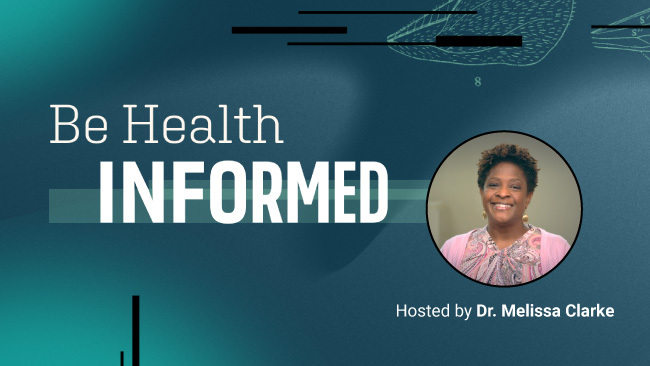
We make decisions about our health and well-being all the time – from how much we sleep to which treatments we seek out when we get sick. The stakes couldn’t be higher where our health is concerned. The new Checkology lesson “Be Health Informed” teaches students how to spot health misinformation and discern which sources are credible and based on quality evidence, so they can avoid being misled.
Students learn to watch out for red flags when encountering misinformation. They also get a glimpse into why certain groups are vulnerable to health misinformation.
“Be Health Informed” is hosted by Dr. Melissa Clarke, the former assistant dean of the Howard University College of Medicine and CEO of the Be Health Empowered Group.
- Watch a 1-minute video segment from the lesson.
“Making Sense of Data” teaches students to be data savvy
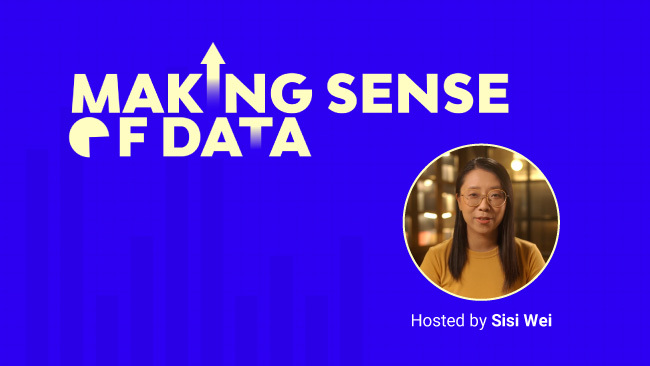
Data is all around us, whether we know it or not. When we pick up our phones, “like” something on social media or do a simple internet search, we are generating and being influenced by data.
In “Making Sense of Data,” students learn how to better understand and analyze the accuracy and credibility of data. Students discover how credible data is produced, why no data is objective or infallible, and what makes some data more valid than others. They also learn to recognize and avoid common pitfalls in how data is interpreted and visualized.
The lesson is hosted by Sisi Wei, a data journalist and the editor-in-chief of the nonprofit newsroom The Markup. Previously, she was the co-executive founder of OpenNews.
- Watch a 1-minute video segment from the lesson.
NLP’s new STEM-aligned lessons on Checkology were created with the generous support of our funders. Additional funding was provided by The Science Literacy Foundation and Smart Family Fund.
Free educator event!
Explore all three new lessons in an educator webinar, “STEM-aligned media and news literacy lessons for your classroom,” on Wednesday, Sept. 28 at 7 p.m. ET/4 p.m. PT. Melanie Trecek-King (host of “Evaluating Science-Based Claims”) and News Literacy Project staff will introduce the lessons and share how you can use them with your students. Register now.
On Democracy Day, protect your vote: Be informed, not misled
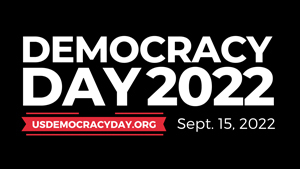 Today is Democracy Day, a collaborative effort by journalists and their allies from around the nation to draw attention to threats to democracy and to highlight ways to resist these threats.
Today is Democracy Day, a collaborative effort by journalists and their allies from around the nation to draw attention to threats to democracy and to highlight ways to resist these threats.
Misinformation and disinformation are two major dangers. That’s why on Democracy Day — 54 days before the midterms — the News Literacy Project is launching a campaign to empower voters to be informed, not misled. We join an effort proposed by the Center for Cooperative Media and whose many partners include the American Press Institute, the Center for Public Integrity and many other news outlets.
To carry out the ideals of Democracy Day, we’ve brought together resources focused on the midterm election to help everyone find reliable information and avoid falsehoods.
Browse our collection of links to reliable election information.
You’ll find links to credible sources for election information, information on how to check whether and where you’re registered, answers to frequently asked questions about voting and more.
Use our resources to resist election misinformation.
We teamed up with the League of Women Voters to create public service announcements to raise awareness about election misinformation. Please watch these and share.
- Oct. 18: Are you being informed or influenced? News literacy skills to prioritize information from credible sources. Register here.
- Oct. 25: Spotting election misinformation and understanding motivations behind how and why it spreads. Presented in collaboration with the League of Women Voters. Register here.
- Nov. 1: How to debunk misinformation and engage in productive conversations without confrontation. Presented in collaboration with the League of Women Voters. Register here.
Read coverage by Democracy Day partners.
Democracy Day is a collaborative effort hosted by the Center for Cooperative Media at Montclair State University in New Jersey. See what newsrooms around the country are reporting about the democratic process in their communities.
Bookmark our midterm election page and look for more resources coming soon.
Democracy Day is just the beginning. As the midterms unfold, we’ll continue to share new resources to help you stay informed. We are interviewing election and misinformation experts about the types of falsehoods that tend to crop up during campaign season, and we’ll share these videos on our page. We’re also working on an infographic that will help you learn how to spot red flags and verify information.
NLPeople: Mary Lynn Hickey, senior vice president of administration
Mary Lynn Hickey
Berkeley Springs, West Virginia
This is part of a series that introduces you to the people of NLP.
1. Can you tell us a little about your background and what brought you to NLP?
As a nonprofit administrator for over 20 years, I have always gravitated toward career opportunities with mission-driven organizations. When I saw the job posting for a program administrator at NLP back in the fall of 2011, I knew this would be a truly unique opportunity to be part of what was then a very small nonprofit but one with such an impressively ambitious mission.
2. You were one of NLP founder Alan Miller’s first hires. What has it been like to be with NLP through its rapid growth and evolution?
Bearing witness to the stunning trajectory of Alan’s bold vision, which has evolved perhaps beyond our imagination way back when, has me feeling more than a little bit awestruck. When I started working at NLP, Checkology®, the virtual platform that allowed NLP to grow to scale was still in the planning stage, and we had classroom programs in Chicago, New York City and DC. Eleven years later, NLP is now reaching an audience across all 50 states and over 100 countries!
3. Since joining NLP, what has been your most satisfying or surprising experience?
It’s hard to pick a single moment because there have been so many celebratory milestones over the years that we can all be very proud of. Looking back though, I would say that being able to contribute so substantially in earlier years when there were so few of us, and we were all working so hard in service to a such a timely and critical mission was an experience that I was so honored to have been a part of. It is enormously satisfying to look back and appreciate NLP’s larger and ever-growing audience who value our mission and work as much as we always did. I well know what a rare and treasured opportunity I’ve had to work here.
4. What news literacy tip, tool or guidance do you most often use?
I value and use them all! I do love and most often the geolocation tool. Reverse image search is a good one too.
5. Aside from fighting for facts, what else are you passionate about?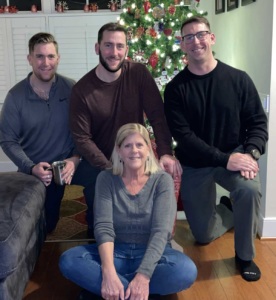
I have three sons who are my heart and of whom I am enormously proud. Their more conventionally defined successes aside, they have grown up to be thoughtful and kind young men whose company I enjoy beyond measure. I’m also passionate about the healing arts and am dedicated to making more space these days for my Reiki practice.
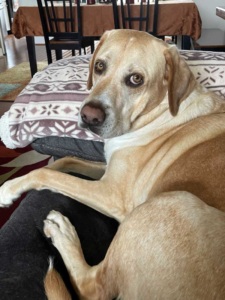 6. Are you on team dog, team cat, team wombat?
6. Are you on team dog, team cat, team wombat?
Hard stop for team dog! Ahh, my fourth “son” is Luke! He almost got washed away in the hurricanes in Puerto Rico back in 2017 but due to his amazing chi, he was instead rescued and sent up north where he eventually ended up at the local shelter in Loudoun County, Virginia. I met him the very morning he had been released from his medical hold and committed on the spot to take him home with me. He was my first, my last and likely my only pet ever because, well, he is irreplaceable!
7. What one item do you always have in your fridge?
Organic creamer for my morning tea. At the start every day, I enjoy a large mug of tea in the early morning stillness before all the noise and busyness of my day.
Gear up for back-to-school with news literacy teaching tools, events and more
Are you — and your students — ready for the new school year?
Get ready with a foundation in news literacy — as well as best practices for teaching it — through our free educator webinars and resources. Additionally, sign up for Checkology®️, our FREE, browser-based, classroom-ready platform that teaches students how to think, not what to think.
When students become news-literate, they learn to better navigate our complex media landscape and avoid misinformation.
New lessons in STEM, opinion journalism and more
This year, Checkology’s newest lessons make it easy to bring news literacy to science, math and art classes among other subjects, such as civics, social studies, history and more. Be sure to share the news with your colleagues and emphasize the cross-curricular connections with your students! These lessons, created in 2022, demonstrate news literacy’s sweeping relevancy:
- “Power in Art: The Watchdog Role of Editorial Cartoonists” Learn about the history of editorial cartooning as a unique and powerful form of opinion journalism and practice analyzing cartoons from the 1700s to the present day.
- “Making Sense of Data” Explore how we create, interact with, and are influenced by data in all aspects of our lives — and learn how to evaluate the accuracy of data-based claims and visualizations.
- “Be Health Informed” Discover how to make sense of the health and wellness information vying for our attention — and avoid being misled.
- “Evaluating Science-based Claims” Learn how to recognize science-based claims and evaluate their credibility.
Events for the new school year
- Memes, editorial cartoons and visual journalism: Lessons for your classroom In this edWeb webinar, get a firsthand look at editorial cartooning, the focus of the Checkology lesson “Power in Art: The Watchdog Role of Editorial Cartoonists.” Hear from leading editorial cartoonists Lalo Alcaraz and Signe Wilkinson and NLP staff experts Peter Adams and Darragh Worland.
- *Already occurred; view the recording here.
- Get rolling with Checkology: Discover new content and more This introduction to brand-new content and features on Checkology will help you teach about social media, misinformation, data literacy and more! This webinar is offered three times during August; choose the session that best fits your schedule.
- *Already occurred; view the recording here.
- AUG. 17, 4 p.m. ET: Register here.
- AUG. 22, 7 p.m. ET: Register here.
- Building strong digital citizens: News and media literacy in the classroom In this edWeb webinar co-sponsored by EdCuration, news literacy ambassadors Allie Niese and Molly June Roquet will discuss how educators can encourage students’ digital citizenship skills.
- AUG. 18: 5 p.m. ET: Register here.
- Back-to-School News Literacy Webinar Series In this six-part virtual series designed for educators across all grade levels and subject areas, we’ll explore the fundamentals of news literacy education. This series is sponsored by the Knight Foundation. Register here to gain access to all six sessions.
- AUG. 17, 5 p.m. ET: Teaching news literacy – Where do I start?
- AUG. 24, 5 p.m. ET: Exploring the misinformation landscape
- AUG. 31, 3 p.m. ET: A discussion with Teens for Press Freedom
- SEPT. 7, 14, 21, 5 p.m. ET: Details to be announced soon.
Other educator resources
- Subscribe to The Sift®, our free. weekly newsletter for educators — delivered during the school year — explores timely examples of misinformation, addresses media and press freedom topics and discusses social media trends and issues.
- Explore the FREE classroom-ready material on our website, including infographics like How to teach news literacy in polarizing times and Eight tips to Google like a pro.
- Check out our “News Literacy Foundations” collection on Flip.
- Watch these videos to see how other educators found creative ways to teach news literacy during the challenging 2020-21 school year and benefit from their lessons learned.
Ambassador Connections: Meet Amanda Escheman
This is the first in an occasional series featuring our NewsLit Nation ambassadors.
Amanda Escheman, Denver
1. As a NewsLit Nation ambassador, you clearly are committed to news literacy education. What drives that commitment?
As an elder millennial, I had access to the internet growing up, and social media became popular during my high school years. I was a captain on our high school speech and debate team and was never afraid to bring up tough topics around the dining room table. I was appalled by the echo chamber I found myself in and appreciated the critical lens I was forming as a competitor in forensics. I engaged in critical thinking with fidelity and was inspired to pursue my bachelor’s in philosophy. It was in college that I developed literacy in critical processing, and I fell in love with education.
Now, as a social studies teacher, I am committed to helping others navigate and interrogate digital content in its many forms and break out of their own echo chambers. Often, digital consumers seem content with sharing unvetted information that reaffirms their biases, and media outlets exploit this vulnerability. The impact on the democratic process is striking; misinformation begets misinformed voters. I can see no greater threat to democracy than a misinformed electorate. This is truly an “us vs. the machine” challenge. Freedom of press grants news organizations the responsibility of guiding the public to make informed decisions. However, the digital renaissance has transformed the information machine into a tool for the attention economy. The value of profit seems to outweigh the value of an informed electorate. Within the classroom, I have the opportunity to do my part in helping students become thoughtful consumers of online content, and moreover, considerate participants in democracy. Critical literacies must evolve to address the changing landscape of news and other digital media.
2. What is your favorite tool or tip for teaching news literacy that you can share with the community?
I am a huge “X-Files” nerd and have always loved the absurdity of conspiracies and the suspension of logic in the sci-fi genre. To share my joy in the absurd, I would instruct a lesson on the Roswell Investigation. Students analyzed primary and secondary sources to form an opinion and explain their reasoning. This was always great fun.
However, in online spaces it becomes more and more difficult to separate fact from fiction. Information can be more easily manipulated, and most people lack the digital literacy skills needed to analyze and evaluate media. I have assigned various lessons through Checkology® to drill down on topics like search engines and algorithms as a way to bring awareness to the way online tools can shape and limit our experiences. The first step in teaching news literacy is to realize that we are fish in a digital data stream and must become aware of the water around us.
3. These are particularly challenging times for being an educator. What has been your go-to de stressor?
I am a history teacher, so I binge period shows like “Outlander.” I am also a collector of historical artifacts including old and rare books, the Civil War/Revolutionary War relics, antiques, and other items I can leverage to inspire my learners to engage. I recently started collecting antique, shellac 78’s and restored a gramophone from 1920. Now I am obsessed with genealogy and have fallen into the rabbit hole of ancestry research.
4. How do you promote news literacy outside of the classroom?
This spring I co-hosted a series of webinars with The Colorado Sun to discuss the foundations of news literacy, teaching controversial issues in the classroom and teaching news literacy during the midterms. Our goal was to inform other educators how to navigate news literacy in education. It is my hope to help integrate news literacy instructional methods into more professional development circles.
5. Aside from fighting for facts, what else are you passionate about?
I am passionate about student civic engagement in local politics. Across the political spectrum, students need to engage with local party leaders and feel invested in their communities. For example, in Colorado, party members under the age of 18 can caucus! Within the Democratic caucus someone who is 16 years old can even vote! This is one way that students can make a political mark and elect local, state and national leadership in a big way.
A message from our new CEO: Charles ‘Chuck’ Salter
From a mission to a movement
Friends of NLP:
You are part of a community of tens of thousands of people who have, in some way, supported the News Literacy Project. You might be an educator, a concerned citizen or an advocate of news literacy education. Many of you also support our work financially. I’m grateful our paths have crossed, and I want to thank you for your partnership and reintroduce myself.
I’m Chuck Salter, and after serving for the past four years as president and COO of NLP, I had the honor of becoming president and CEO on July 1, succeeding our visionary founder, Alan Miller. While I hope to meet many of you in the months and years ahead, if you’d like to know a bit about me now, you can check out this Q&A, read my bio or watch this video, and please follow me on Twitter @saltercrs.
This is an exciting time at NLP. We are turning our mission into a movement to create a future founded on facts. In addition to new leadership, we have a new strategic plan with a redoubled commitment to not only expand our work in schools across the country through new programs and resources but also to reach out to the public as well. We are helping everyone become more discerning consumers of news and other information and better engaged — and more equal — participants in our democracy.
The need for this movement has never been greater. American democracy is under attack, along with the rights and freedoms it promises for all people. While their motives vary, merchants of chaos advance their agendas by taking advantage of our complex and quickly moving information landscape to sow doubt, confusion, fear and even anger and hatred among all of us. No democratic society can endure this type of division — it destroys the foundation of the shared reality that’s required for honest debate and eventual consensus.
But there is hope, and you are part of that hope. I thank you for your support of our work, and I look forward to more people joining all of us in the years ahead to help strengthen our democratic discourse and create a more news-literate America.
My best,
Charles “Chuck” Salter
Hometown Headlines contest winner covers pandemic from student perspective
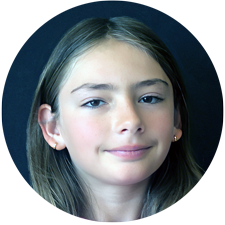 For Los Angeles middle school student Willa Earnest-Blum, the jarring re-entry into the social landscape of in-person classes after pandemic restrictions ended inspired an idea that led to a news story.
For Los Angeles middle school student Willa Earnest-Blum, the jarring re-entry into the social landscape of in-person classes after pandemic restrictions ended inspired an idea that led to a news story.
A student at Girls Academic Leadership Academy in Los Angeles, Willa pitched her story idea about the difficult adjustment to the News Literacy Project’s first Hometown Headlines contest. To enter, students submitted a news story idea to NLP staff, who chose the best pitch to develop into an article.
Willa’s journalism teacher Jessica Valera encouraged her to enter the contest after she finished her Checkology® virtual classroom lessons ahead of schedule.
Her experiences at her school gave her the idea for the story, as she and her classmates were finding ordinary in-person interactions awkward. “It just came to mind,” she said. “I feel like it’s really evident right now at my school. My experiences day to day made me think of it.”
Yet, she and her friends didn’t talk about the issue, which made her recognize the need to tell the story. “It made it more important to me.”
She wrote:
Teachers and students started questioning how a return to normal, in-person classroom settings — where one is seen constantly — has impacted those who for so long adapted to logging onto class from the comfort of home.
Students were once behind a screen, free of other people’s eyes. Now every little mistake was amplified by being front and center.
Her mom, Rebecca Baron, said she didn’t even know Willa had entered the contest until Valera called to say she had won. “She really did it on her own. She was very independent in doing this, and I am really excited for her.”
Importance of multiple perspectives
Willa, 12, interviewed her teacher, a classmate and the school counselor. “I felt like it was important to cover all the bases of different perspectives. It taught me a lot talking to my counselor and my teacher and my classmate because I got to see their perspectives, which was sometimes different from mine.”
With the help of NLP staff — Katie Aberbach, education marketing manager, and Kim Bowman, senior associate of user success — Willa created a Google Doc to organize her reporting, complete with checklists, names of sources and the information they provided. Aberbach then helped connect Willa with local reporter Brandon Pho, a journalist at Voice of OC in California and a Report for America fellow. He helped Willa develop the story during a series of virtual meetings.
Her thoroughness immediately impressed Pho. “She organized her reporting better than I organize my notes out in the field,” Pho said. “We would go to that document and ask, ‘What is this story about? What are the voices? What do they have to say?’”
He asked her what stood out to her as the most interesting piece of information in her notes, and this sparked Willa’s idea for story’s opening:
Nearly 700 kids at Girls Academic Leadership Academy (GALA) are a window into an issue affecting nearly 50 million public school students nationwide.
“That lede was entirely her idea,” Pho said, referring to the opening paragraph of a news story intended to entice the reader.
Connecting with the reader
Willa said Pho helped her find the heart of her story. “He really taught me how to take a small quote and something I thought would not be important and to give it a longer, deeper perspective.”
In working with him, Willa began to better understood her own feelings about the issue and was able to translate this into something the reader could connect to. And sometimes, she learned, this means leaving things out. “We talked about things that could take away from the overall message. You don’t need to say it all,” she noted.
Pho said he found the experience rewarding and gained insights into his work as he considered the basic concepts of journalism and shared them with Willa. In the end, he thought Willa’s article was a strong piece of journalism.
“As long as she has a story to tell, it doesn’t matter that she was a sixth grader. It wasn’t a good news story, it was a great news story,” he said.
The Voice of OC wrote about Brandon’s role as a mentor to Willa and published her piece.
East-West Center honors NLP founder with Distinguished Alumni Award
The East-West Center, an independent, public nonprofit that works to improve relations and understanding among the people and nations of the United States, Asia and the Pacific, awarded NLP founder and former CEO Alan C. Miller with its 2022 EWC Distinguished Alumni Award June 30 in Honolulu.
The honor recognizes outstanding accomplishments, including major contributions to the EWC mission, significant career achievements and continuing support for the goals and objectives of the Center. The awards were presented at the East-West Center/East-West Center Association conference. Miller was unable to travel to Hawaii to accept the award but delivered remarks to conference attendees via video. The text of those remarks is below.
‘Demonstrated excellence and achievements’
Miller had a distinguished career as a Pulitzer-Prize-winning journalist with the Los Angeles Times before founding NLP in 2008. He earned a master’s degree in political science in 1978 from the University of Hawai‘i at Mānoa and was a student participant at the Center’s Communications Institute from 1976 to 1978. He also completed an internship in The Washington Post’s Tokyo bureau and edited the student magazine, Impulse.
The Center is recognizing Miller for “the demonstrated excellence and achievements in his initial and second careers, which are both worthy of recognition. Building on the skills and cross-cultural experience he gained at the Center, he has demonstrated integrity, determination, vision, creativity, courage and professional commitment to journalism and education and remained supportive of the goals of the Center. Miller continues to support the goals and objectives of the Center by participating in Center events and remains in touch with Center friends and colleagues.”
He was honored alongside Andolgor Purevjav, a leader, author, human resources consultant and mentor in Mongolia who incorporates the Center’s values through her work with the Ganabell Institute of Success.
Miller’s remarks
I’m sorry that I can’t be with you all in person but I’m there in spirit.
Thank you so much President Vares-Lum, Jim Scott and the alumni association for this very special and meaningful honor.
A heartfelt mahalo goes to my former East-West Center colleague and friend Tinu Brara, who is with you, for having nominated me.
My time at the center was one of the most consequential and enriching experiences of my life.
I had previously spent a college semester in Japan. But it was my time in Honolulu — and through such experiences as attending programs at Jefferson Hall, enjoying the camaraderie and international cuisines at food co-ops in Hale Manoa, co-editing the student magazine Impulse and gaining a master’s degree at UH — that opened up the rest of Asia and the Pacific for me. It was there that I formed deep friendships that have lasted nearly half a century.
As an aspiring journalist, I enjoyed helping host Jefferson Fellows from Japan, Singapore and Thailand and am delighted to see that this program is still thriving.
My field study was a highlight of my experience. I was fortunate to land an internship in The Washington Post’s Tokyo bureau, three years after the paper broke the Watergate scandal. I got to shadow the Post’s East Asia bureau chief, complete a project on the American press in Japan and write two stories published by the paper.
My internship with the Post led to my first fulltime newspaper job working for Harry Rosenfeld, who had been Woodward and Bernstein’s boss at the paper during Watergate. Harry had just left the Post to edit two papers in Albany, N.Y., and I was his first hire. He was an exacting and inspiring boss and became a longtime friend and mentor.
When I left the center, I hoped to become a foreign correspondent based in Tokyo and was offered that chance by the LA Times. But by then I had found my calling as an investigative reporter in the paper’s Washington bureau.
Yet, I had one more special Asia sojourn in store.
In 1998, I was awarded a Japan Society fellowship and pursued two projects that reflected both the transcendent and the tawdry sides of Japan. For one, I interviewed six ningen kokuho – living national treasures – masters of traditional crafts and arts, including the country’s foremost bunraku puppeteer and a sword-maker who restored swords of the samurai.
For the other, I dug into Japan’s shadowy campaign finance practices, comparing them to what I had unearthed in my investigative work on this subject in the U.S. and turned this into a page one story for the LA Times.
Since embarking on my second career with the News Literacy Project, it has been gratifying to make connections with my center experience as well. Educators in 25 counties in Asia and the Pacific have registered to use our Checkology virtual classroom and the Yomiuri Shimbun has made some of our other resources available in Japan. Leading Asian news outlets have done pieces on us.
Moreover, educators in Hawaii have used Checkology since 2017 to reach more than 1,400 students, and we have forged a strong and growing partnership with the Hawaii Department of Education. Recently, President Vares-Lum has become an effective champion for NLP and news literacy across the state as well.
In the end, it is the close friendships forged at the center that have meant the most. This includes Stu Glauberman, my roommate in Hale Manoa and co-editor of Impulse who remained in Hawaii, and Ian Gill, a colleague at the Communications Institute who settled in the Philippines, as well as Tinu.
For all of us, Mike Anderson was an extraordinary friend at the center and for more than four decades thereafter, who we lost much too soon a year ago this month. Throughout his long, distinguished career as a diplomat in Asia, Mike epitomized the values of the center in promoting understanding, mutual respect and cooperation. He won this award in 2002. I am honored to follow in his footsteps, and in those of others who have come before me.
Thank you again for this treasured recognition and for the chance to reflect on how much the center and my experience in Hawaii have meant to me.
About the East-West Center
Established by the US Congress in 1960, the Center serves as a resource for information and analysis on critical issues of common concern, bringing people together to exchange views, build expertise, and develop policy options.
Founders’ concern about fractured America relevant then, now
How are you celebrating the Fourth of July — with fireworks, a parade, a family cookout?
Try sharpening your news literacy skills! Our nation’s founders would be proud of you.
While they didn’t have to contend with the 24-hour news cycle, internet trolls or dangerous conspiracy theories, the Founding Fathers were concerned that misinformation and siloed thinking could weaken our young democracy.
In PoliticusUSA Tim Libretti, an Illinois university professor, wrote that the founders worries extended beyond meddling by foreign powers. They also were concerned about the vulnerability of the population to deceit and manipulation by their fellow citizens. However, the Founding Fathers put great stock in the people’s ability to make sound decisions based on facts that served the public good.
But John Adams had his doubts, Libretti noted. He feared that “human reason, and human conscience, … are not a match for human passions, human imaginations, and human enthusiasm.”
Factionalism, then and now
Adams wasn’t the only Founding Father with concerns. In America Magazine, a Jesuit publication, Matt Malone wrote that James Madison worried about factionalism, or the public breaking down into small, single-minded groups that act at the expense of the greater whole. And the Father of the Constitution provided an example: Tiny Rhode Island, which was beset by factionalism. “Madison believed that only a large society, occupying a vast expanse of space, could be effectively governed as a republic. If the place were too small, then like-minded people could too easily find one another and form a faction,” Malone wrote.
He quotes Madison as saying,“In the extended republic of the United States a coalition of a majority of the whole society could seldom take place on any other principles than those of justice and common good.”
Today, millions of Americans need not cram themselves into 1,200 square miles — the size of Rhode Island — to form a powerful and destabilizing faction. Thanks to the internet and social media they can just look at their phones.
With little effort, anyone can find groups of like-minded, passionate people whose beliefs are often based on misinformation and conspiracy theories, with QAnon being one of the most widespread and dangerous. Many adherents were among the rioters who stormed the U.S. Capitol on Jan. 6, 2021.
Education is the antidote
What can you do on July 4 to stand up for the Republic? Become more news-literate so you are not vulnerable to conspiracy theories and factionalism.
And put your faith in the power of education, as Thomas Jefferson did. “I think by far the most important bill in our whole code is that for the diffusion of knowledge among the people. No other sure foundation can be devised for the preservation of freedom, and happiness,” he wrote in 1786.
Of course, his idea of diffusion of knowledge excluded enslaved Africans and all women.
At NLP, we strongly believe that education is the most effective and equitable approach to developing a more news-literate public. Our society relies on people who can think critically, engage responsibly with information, value our democracy and participate in keeping it robust. That’s why we hope you’ll spend some time with our resources to sharpen your ability to recognize misinformation. And please share that knowledge with your family, friends and network.
Happy Fourth of July!
Tools for recognizing information and helping others do the same
A big part of being news-literate is knowing what to watch out for and being able to recognize misinformation. That way, you can pause when you see it — and NOT share!
You can also respond to posts in replies and comments, letting others know — without amplifying —content that is false, misleading or taken out of context.
Why do people share misinformation? Bad actors and those attempting to cause confusion share disinformation, typically for personal, political or financial gain. But many people, often with good intentions, are fooled into sharing falsehoods, further polluting the information landscape.
Our misinformation infographic can help you understand what misinformation is and how to recognize it.
Talking with family and friends
While always problematic, when misinformation appears alongside pet photos and family updates on social media, it can be especially frustrating and unwelcome. It’s one thing if a stranger spreads falsehoods online. While every scenario is different, following some general best practices can help keep the conversation civil and make the interaction worthwhile. It may not be easy but talking to loved ones about false or misleading content can help them think twice about what to share in the future. Stepping into the role of fact-checker when it comes to loved ones can be tricky and stir strong emotions, so it’s worth preparing for — especially as more falsehoods seep across social media and into family and friend group chats. Check out this poster, How to speak up without starting a showdown, which outlines six steps to guide you through a conversation with family and friends.
Critical points to remember about misinformation:
- Falsehoods always reach more people than corrections.
- Once misinformation is online, it spreads quickly.
- Anyone can fall victim to falsehoods.
- There’s no such thing as good misinformation — facts matter!
News Literacy Ambassador Program is growing
NLP’s News Literacy Ambassador Program, a national initiative to mobilize educators and amplify organizing efforts in the fight against misinformation, is an essential part of our ambitious four-year plan to build a more news-literate nation, and, in turn, a more robust, equitable democracy.
That’s why we are expanding this program with a call for applications from middle and high school educators living in Hawai’i, Illinois, Ohio, New Mexico, Southwest Texas and Utah.
We’re looking for people who can have an immediate and meaningful impact on our work, are unafraid to experiment, can work collaboratively as well as independently and believe in the importance of quality professional learning to empower educators to teach middle and high school students how to sort fact from fiction in the digital age.
To reach NLP’s goal of embedding news literacy in the American education experience, we are activating the ambassadors as a regional movement-building model to mobilize news literacy advocates for systemic change. The overall goal is for ambassadors to champion news literacy education at the local level, helping educators teach students how to think (not what to think).
Advocates for news literacy education who want to make a difference in their community can learn more and apply by July 31. These part-time positions include a small stipend. Find out more about NLP’s current news literacy ambassadors here.For questions, please email [email protected].
All educators interested in exchanging resources and receiving timely updates about news literacy may join NLP’s NewsLit Nation Facebook Group.
Nation, states and local communities embrace Juneteenth
NLP recognizes and celebrates the 157th Juneteenth, which became an official United States holiday last year. The designation commemorates June 19, 1865, when federal troops freed the last slaves of the Confederacy in Galveston, Texas. More than two and a half years earlier, on Jan. 1, 1863, Abraham Lincoln signed the Emancipation Proclamation. And two months earlier, Confederate General Robert E. Lee surrendered to the Union Army, ending the Civil War.
Also known as Freedom Day or Emancipation Day, Juneteenth is the oldest known celebration marking the end of slavery in the United States, according to the National Archives. Juneteenth has been formally celebrated primarily by people in Black communities in Texas since 1866.
Prior to President Joe Biden designating it a national holiday in 2021, most states and the District of Columbia recognized Juneteenth with an observance of some sort. It was already a holiday in some states, with Texas leading the way in 1980.
While many states automatically adopt a new federal holiday, they do not have to. After last year’s federal declaration, states across the U.S. — both “red” and “blue” — quickly moved to codify the holiday. These include Alabama, Colorado, Connecticut, Michigan, North Dakota, Utah and West Virginia, among others. Counties and cities around the country have also declared Juneteenth a holiday, further establishing it as an important day in American history.
Steer clear of misinformation about Juneteenth
We encourage you to join the News Literacy Project in celebrating Juneteenth and learning more about its history and meaning. This Smithsonian piece is a good place to start. And this New York Times interactive article from 2020 puts the holiday in perspective while celebrating it, too.
As with any important day in U.S. history, there is misinformation about Juneteenth, myths that perpetuate from one decade to the next, and current-day efforts to present the holiday as something it’s not. Make sure to search out an array of credible, standards-based sources and fact-checks and don’t assume anything you see about the holiday — especially posts on social media that trigger emotional reactions such as anger — is credible.
For much more on the Juneteenth holiday, check out our Flipboard collection of articles and resources.
NLPeople: Sara Lewis, operations manager
NLPeople Sara Lewis
Takoma Park, Maryland
This is part of a series that introduces you to the people behind the scenes at the News Literacy Project.
 1.) Can you tell us a little about your background and what brought you to NLP?
1.) Can you tell us a little about your background and what brought you to NLP?
I was born and raised in Grand Rapids, Michigan, and am a proud Michigander. At the University of Michigan, service was a big part of my college experience, and it was through volunteering with children that I decided I wanted to be a teacher. I joined Teach for America right out of college and began my professional journey in education. I taught high school and middle school social studies for seven years, most of them in Washington, D.C., and then I then transitioned to supporting teachers through working in operations at education nonprofits in New Haven and Boston. After being a full-time mom for five years, I then found my way to NLP, which felt like a perfect fit for me as a former social studies teacher and nonprofit operations manager.
 2.) How has your Teach for America experience working with students in underserved areas informed your work at NLP?
2.) How has your Teach for America experience working with students in underserved areas informed your work at NLP?
Well to start, I so wish that NLP had been in existence when I was teaching social studies. As a former teacher, not only can I appreciate the incredible resources NLP provides for educators, but I also understand the need for strong systems to make an organization run smoothly. When I was teaching in urban public schools several years ago, there were broken systems at every turn and that kept all stakeholders from having the experience that they deserved. Thus, when I started working in nonprofit operations, I made it a priority to create and implement organized systems that make life easier for all staff and the educators we serve.
3.) Since joining NLP, what has been your most satisfying or surprising experience?
During my first year of teaching, I spent each evening reviewing and sometimes learning the content that I was about to teach the next day. And while staying just a day ahead of my students certainly wasn’t ideal, I did truly enjoy learning new material that I hadn’t been taught in my history classes. Lacking a background in journalism, I was surprised to discover when I first started working for NLP just how much I didn’t know about what goes into creating quality news. I soon realized that one of the biggest perks of this job would be getting to again learn something new every day. At NLP, I am constantly learning new things about news literacy and that’s been probably the most satisfying and surprising part of being a part of this organization.
 4.) You have young kids; do they understand NLP’s work and your role?
4.) You have young kids; do they understand NLP’s work and your role?
The other day I overheard a conversation between my 7-year-old daughter and a friend in which they were discussing what their parents did at work. My daughter explained to her friend that her mom “helps people understand what to believe on the internet,” so she has a general understanding of the work that NLP does. My 10-year-old son certainly has a higher level of understanding of NLP’s work than his sister. He has always been quite precocious, and like his mom, is a history buff and a news junkie. One of my favorite things to do with him while we’re in the car on the way to soccer practice is to listen to news podcasts and then talk about the content. I look forward to introducing him to Checkology in the near future!
5.) What news literacy tip, tool or guidance do you most often use?
I’m not sure that this is the tool I use most often, but my favorite new literacy tool is probably geolocation. While my family is quite settled in our current house and we have no plans to move anytime soon, I am a real estate junkie and I love checking out the online listings of nearby homes for sale and using Google Street View to explore new neighborhoods.
6.) Aside from fighting for facts, what else are you passionate about?
The outdoors! I love being outside in all sorts of weather, particularly in the snow. Unfortunately for me, D.C. gets only one or two good snowfalls a year (if that). I grew up skiing, ice skating on the lake, playing ice hockey, and building snow forts, and I love to find ways to get outside with my family. One of the best parts of the pandemic has been all the hiking that I’ve been able to convince my husband and kids to do with me. In addition to playing outside, I also love traveling and exploring new places.
7.) Are you on team dog, team cat, team wombat? Or do you prefer stuffed animals to pets?
My mother is quite the animal lover, and I grew up with dogs, cats, guinea pigs, cockatiels, finches, fish, frogs and bunnies. Somehow, I managed to marry a man who is not even an animal liker, thus our house is devoid of pets. But I’m definitely on team dog. Someday I plan to come home with a dog and hopefully my husband will come around to the new member of our family.
8.) What item do you always have in your fridge?
A lemon. I use lemons all the time. In my tea, squeezed over roasted veggies, to make marinades and dressings, etc.
9.) What’s in your backpack, laptop case or pocket right now?
I’m a mom so I of course have a giant purse that contains all the usual items (keys, wallet, mask, reusable grocery bags), but then I also have lots of snacks, band-aids and Kleenex. Oh, and my planner, which is made of paper! I get teased for having a paper planner, but I much prefer this old school method of organizing my life.
2022 Gwen Ifill Student of the Year
2022 Gwen Ifill Student of the Year
Alysa Baltimore
Station Camp High School
Gallatin, Tennessee
When her AP English teacher let Alysa Baltimore and her classmates choose a book to read and report on, Baltimore saw it as an opportunity to learn more about an issue important to her — racial justice.
She chose Just Mercy, a nonfiction book about redemption and justice by Bryan Stevenson, founder of the Equal Justice Initiative, which works to end mass incarceration. Stephanie Jones, Baltimore’s teacher at Station Camp High School in Gallatin, Tennessee, was not surprised that she chose such a serious and meaningful read.
“She is an intelligent young woman who is passionate about many issues, especially those concerning race,” said Jones, who nominated Baltimore as NLP’s Gwen Ifill Student of the Year.
Baltimore, a junior, will be honored as one of NLP’s News Literacy Change-Makers in a virtual event June 9 along with the Alan C. Miller Educator of the Year and the John S. Carroll Journalist of the Year. Register here to join the event.
To be considered for the award, students submit an essay demonstrating how becoming more news-literate has impacted their lives. Baltimore, 16, explained how she used newfound research and critical thinking skills to deepen her knowledge of mass incarceration in an effort to make others aware of the issue.
“Finding adequate statistics and facts on mass incarceration might have been challenging if it weren’t for the skills that I developed from completing the Checkology® virtual classroom lessons,” she wrote in her award submission.
What she learned also has influenced her daily habits. “When you have so many people manipulating the truth, it becomes challenging to differentiate between what’s real and what’s not. Checkology has changed the way I look at social media and news articles. Now I check the background before I share anything,” she said.
Baltimore also has become the person friends and family go to when they are unsure about the credibility of information they encounter. “I do think I have a responsibility to correct people,” she said of friends who seek her out, and her sister in particular. “If she’ll come to me with something that might not be accurate, I can help her find true information and help build her connection with what I’m passionate about,” she said.
Baltimore credits Checkology with helping to give her the insight to recognize a professional goal for her future, which is someday becoming a defense attorney. “On the surface, Checkology may be viewed as simple lessons on finding quality articles, but it ultimately led me to developing a passion for equality, equity and justice,” she said.
About Gwen Ifill
Ifill was a trailblazing journalist — and longtime NLP supporter and board member — who died in 2016. The award in her honor is presented to female students of color who represent the values she brought to journalism. Ifill was the first Black woman to host a national political talk show on television as moderator of Washington Week and was a member (with Judy Woodruff) of the first female co-anchor team of a network news broadcast on PBS NewsHour.
2022 John S. Carroll Journalist of the Year
2022 John S. Carroll Journalist of the Year
Pierre Thomas, Chief Justice Correspondent, ABC News
Over his long and distinguished career, Pierre Thomas has covered some of the biggest stories of our time. While doing so as the chief Justice correspondent for ABC News, he also has taken the initiative to go beyond the story and help the public understand the vital role that journalism plays in our democracy.
“Journalists are not always portrayed as patriotic, but we are,” Thomas said. “And we want the country to thrive, and one of the ways it can do well is to have a public that knows how to consume news.”
Thomas has been volunteering with the News Literacy Project in various capacities since 2009 and has played a meaningful role in the organization’s growth. In recognition of his commitment to both quality journalism and to news literacy education, Thomas has been named the News Literacy Project’s 2022 John S. Carroll Journalist of the Year.
“In addition to being a superb, award-winning journalist, Thomas embodies the journalistic and personal values that John S. Carroll epitomized,” NLP founder and CEO Alan C. Miller said in nominating Thomas for the award.
Thomas was one of NLP’s first volunteer journalist fellows; he participated in the in-person classroom program and initial digital unit, which evolved to become the Checkology® virtual classroom, and took part in five NLP-related events between February 2009 and January 2022. Thomas served on two prior advisory groups and is now a member of the National Leadership Council.
“Given what’s at stake in this moment that we find ourselves, we have to get as many people to know how to discern the news and how to consume it as possible,” he said. “And if anyone did not understand why an organization like News Literacy Project is important, all you need to do is look at January 6th. A bunch of people, angry, showed up, committed acts of violence based on misinformation. And that’s not a political view, that’s a journalistic, fact-driven view.”
Thomas will be honored as a News Literacy Change-Maker in a virtual celebration event June 9 along with NLP’s Alan C. Miller Educator of the Year and the Gwen Ifill Student of the Year. To join the event, register here.
As the ABC News chief Justice correspondent, Thomas covers major stories across all ABC News platforms. Since joining the network in 2000, he has covered some of the most important news stories of the day, from the 9/11 terrorist attacks to mass shootings to racial injustice. He has received many of journalism’s highest honors, including the prestigious Peabody and Alfred I. DuPont-Columbia University awards and numerous Emmys and Edward R. Murrow awards. In 2012 he was named Journalist of the Year by the National Association of Black Journalists.
Thomas is also the past chairman of the Reporters Committee for the Freedom of the Press.
In 2020, he reported on the murder of George Floyd and the racial injustice and police brutality protests that followed.
About John S. Carroll
Named for one of the most revered newspaper editors of his generation, the John S. Carroll Journalist of the Year Award is given annually to journalists who have contributed significantly to NLP and its mission. The honorees, who receive $500 and a glass plaque with an etched photo of Carroll, are selected by a committee of NLP board members and staff. During an acclaimed journalism career spanning four decades, Carroll was the editor of three major U.S. newspapers — the Lexington (Kentucky) Herald-Leader, The Baltimore Sun and the Los Angeles Times. He was a founding member of NLP’s board and served as its chair for four years until shortly before his death in 2015.
2022 Alan C. Miller Educator of the Year
2022 Alan C. Miller Educator of the Year
Jamie Gregory
Greenville, South Carolina
When it comes to teaching students to become more news-literate and helping her peers integrate news literacy education across disciplines, Jamie Gregory, librarian and journalism teacher at Christ Church Episcopal School in Greenville, South Carolina, leads the way.
Gregory is NLP’s 2022 Alan C. Miller Educator of the Year award winner. Tamara Cox, a librarian colleague at Wren High School in Anderson, South Carolina, nominated her for the honor. “She has been committed to integrating news literacy skills into various aspects of curriculum since she began teaching 17 years ago and is willing to learn more to adapt her teaching methods as students’ needs change,” Cox said.
Gregory will join the Gwen Ifill Student of the Year and John S. Carroll Journalist of the Year award winners in a virtual celebration event Thursday, June 9, at 7 p.m. ET. Register here to join the event.
Gregory discovered NLP’s resources six or seven years ago, when she returned to teaching journalism after a break of several years and realized that she needed a new approach in the classroom. She attended her first NewsLitCamp®, where NLP experts like John Silva, senior director of professional learning, and local journalists work with teachers to explain news literacy and journalism concepts. “I quickly knew that I was going to have everything I needed to help me to develop a curriculum,” she recalled. “Hearing John Silva say every student has the right to news literacy education reignited my passion, and I knew I was in the right place, and I have not looked back.”
Cox said Gregory serves as a subject matter expert for her school and others in the region, immersing herself in professional learning opportunities and helping NLP create a teaching framework for educators to use across grade levels. When she was asked to begin teaching a newspaper production class, Gregory applied and was selected for a Reynolds High School Journalism Institute, where she received two weeks of instruction from journalism professionals and educators. She is committed to sharing what she learns with other educators, recently presenting news literacy webinars with the South Carolina Association of School Librarians.
“No matter which school, which course, as a classroom teacher or school librarian, Jamie has consistently found ways to incorporate news literacy into the curriculum, showing her belief in its importance,” Cox noted.
For example, Gregory helped an English teacher implement coursework built around censorship. Students read books that the state of South Carolina had challenged, conducted research about the attempted censorship and then wrote editorials defending freedom to read, resulting in some students’ work being published in the local newspaper. Gregory also worked with a science teacher to craft a weekly assignment in which students shared news articles related to science topics, and she taught a lesson on discerning fact from opinion as the class was reviewing news coverage about stem cell research. “Students can find information on their own, but they lack the skills to really differentiate what’s reliable. And they need instruction on being an ethical digital citizen,” Gregory said.
“It has been said that democracy depends on an informed citizenry, and Jamie Gregory embodies this sentiment with her passionate work to build critical thinkers, creative lessons and programming on media/news literacy topics, and a focus on helping students develop their voices and make themselves heard,” Cox said.
Detroit educators: Don’t miss this upcoming NewsLitCamp®
End your school year on a high note by attending the News Literacy Project’s premier free professional learning event, NewsLitCamp.
Detroit NewsLitCamp, Part 2, June 23, 4:30 to 7:30 p.m. ET
Please join us for a virtual half-day of professional learning focusing on key news literacy concepts built exclusively for educators within the Detroit Public Schools Community District and surrounding areas.
During this NewsLitCamp, you can expect to hear firsthand from journalists with the Detroit Free Press and the Michigan Advance. This is the second installment of our NewsLitCamp Detroit series for the 2021-22 school year. This event is sponsored by the Knight Foundation.
NLPeople: Jake Lloyd, social media manager
This is part of a series that introduces you to the people of NLP.
Jake Lloyd, social media manager, Seattle, Washington
1. Can you tell us a little about your background and what brought you to NLP?
I have a journalism background, having grown up in Michigan reading the sports page of the Ann Arbor News (RIP) every afternoon and then writing for a local paper and the school weekly while in college. Post-graduation, I moved south and cobbled together freelance sports writing gigs in Durham, North Carolina, for a couple years during the middle of the recession. As fun as it was covering college basketball games in an incredibly competitive market, I decided to try something new through AmeriCorps. That’s what landed me in D.C. doing communications for a local nonprofit, DC SCORES, which I fell in love with. The focus soon became social media (learning Twitter in 2009 was fun!), and nine years later, a friend sent me a tweet — of course — about the opening at NLP and I jumped at the opportunity. While in D.C., I also did some freelance writing for the AP (Associated Press) and started a niche podcast on the American University men’s basketball team with two friends – we were the only media outlet that consistently covered the team!
2. How has working for NLP impacted your life or changed your world perspective?
Where do I start? When I joined NLP in 2018, I knew that the work was important and I had heard people bandy about the (now-meaningless) term “fake news,” but I really had no idea how pervasive the threat of misinformation and disinformation was to all aspects of society. It’s obviously only gotten worse since I came on board. Personally, I’ve learned to look at every story (and tweet) with nuance and a critical eye; to check my emotions at the door of every conversation about every topic; to triple-check who’s actually saying what; and to understand that multiple things can be true. Professionally, I feel privileged to work for an organization that’s tackling the biggest, most overarching problem worldwide. Name me a crisis today that couldn’t be helped by news literacy.
3. Since joining NLP, what has been the most satisfying or surprising experience?
This is weird since I haven’t met half of them in-person, but you just know when you’re working with really good people who are all dedicated to a cause — and that’s 100% the case with NLP’s staff. From our few in-person interactions (remember 2019?) to the day-to-day virtual world we now inhabit, the work wouldn’t feel so meaningful if not for the people doing it. Our community is strong despite the physical miles between us.
4. What news literacy tip, tool or resource do you most often use?
This seems simple, but just to pause, to slow down. We often say “sanitize before you share” — a term we’ve used a lot during COVID-19 — and it rings so true to me. With any piece of information, if you just take a beat and truly assess it, you’re much less likely to share a falsehood or be tricked by a bad actor.
5. You recently moved cross country. What prompted you to make such a big move?
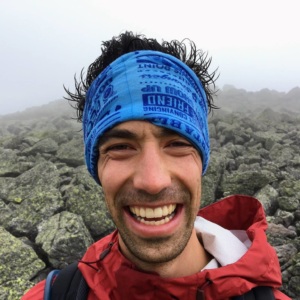 The outdoors! The PNW’s been on my radar for quite some time and after 12 years in D.C., it was time to head to the mountains and the wealth of big-nature opportunities that this area of the country has at its doorstep. Plus, it’s pretty cool to watch basketball games here that don’t end at 1 a.m.!
The outdoors! The PNW’s been on my radar for quite some time and after 12 years in D.C., it was time to head to the mountains and the wealth of big-nature opportunities that this area of the country has at its doorstep. Plus, it’s pretty cool to watch basketball games here that don’t end at 1 a.m.!
6. What is the first thing you will do once we fully emerge from the seemingly unceasing COVID-19 pandemic?
Oof! Probably go to as many big indoor events — hoops games, maybe a few concerts, etc. — as I can handle in a very short period of time. Also, I’ll visit some friends I haven’t seen in a few years.
 7. Aside from fighting for facts, what else are you passionate about?
7. Aside from fighting for facts, what else are you passionate about?
As mentioned above, I love the outdoors. I just feel more alive when I’m outside — whether I’m running, hiking, biking or skiing (that’s a new, PNW-induced hobby; I’m very much an amateur). From biking down the west coast to running five 50K ultramarathons with number six coming up in June, to leading a morning free fitness-based community called November Project while in D.C. and taking in the most beautiful sunrises, I dig physical challenges in beautiful places and I also love all weather, especially rain (thus the move to Seattle). And I shouldn’t neglect basketball on this — I’m a bit of a nerd. Have you tried the NBA version of Wordle called Poeltl? It’s a daily fix for me.
8. Are you on team dog, team cat, team wombat? Or do you prefer stuffed animals to pets?
Dog/cat for sure, although I’m also a squirrel guy — they get a bad rap. I don’t own pets, but we have six chickens coming in a couple months, so that should be interesting.
9. What’s one item you always have in your refrigerator?
Siracha and salsa.
10. What’s in your pocket/backpack/laptop case right now?
Just checked — nothing! Working from home has its perks 😊.
Educator instills appreciation for journalists who confront press freedom limits
For Kristin Larson’s journalism students, studying press freedom is more than an academic exercise. She acquaints them with journalists who have put themselves at risk to reveal important information that people in power would prefer to remain hidden.
Larson, an English teacher at South Windsor High School in South Windsor, Connecticut, uses NLP’s Checkology® virtual classroom lesson “Press Freedoms Around the World” as a foundation.
They also watch Palestinian photojournalist Eman Mohammed’s TED Talk, “The courage to tell a hidden story,” and analyze one of her images: a photograph of Palestinian photographer Faiz Moemen, who lost his legs during an airstrike. He sits in a chair holding a camera, while a wheelchair with a camera on the seat is next to him.
Exploring press freedom limits
With this unflinching introduction, Larson’s class of ninth to 12th graders begins to understand the courage needed to tell the truth when others might not want it to be told and the impact of such work.
“I want them to learn the risks of finding the hidden story and the risks of telling it,” Larson said.
Her students then choose a leading international journalist as their focus for a class presentation. They research the person’s education, experience and important work, and compile quotes and video clips.
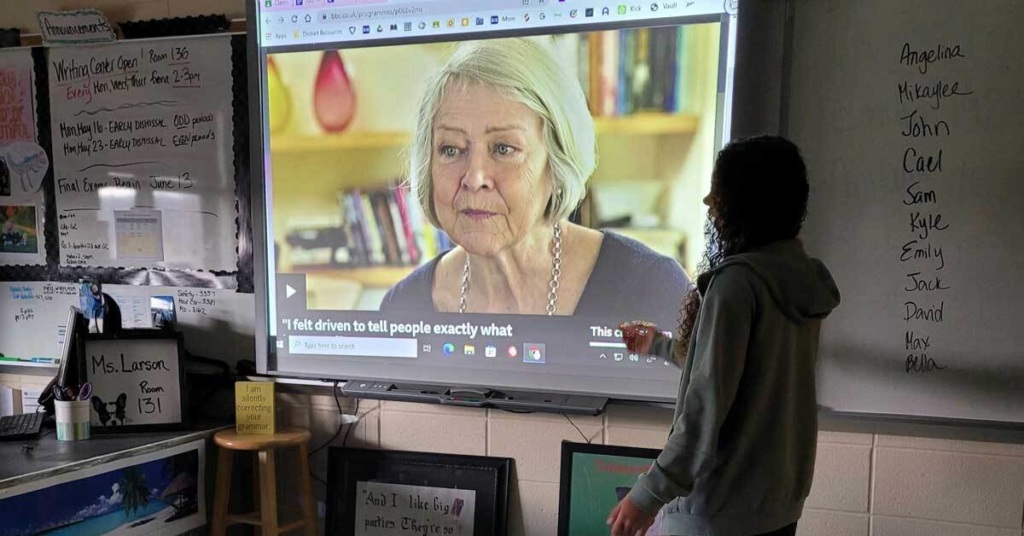
A student in Kristin Larson’s journalism class gives a presentation about British journalist Katie Adie. The South Windsor, Connecticut, students were studying world press freedom. Photo by Kristin Larson
Larson ranks the presentations based on the degree of press freedoms in that journalist’s country, starting with the greatest freedoms and ending with the least. She bases her determinations on the Reporters Without Borders (RSF) annual World Press Freedom Index, which the students learn about in the Checkology lesson.
Last week’s presentations included journalists from Ireland and the United Kingdom, with greater freedoms, and Sudan, Saudi Arabia, China, North Korea, Venezuela and Russia, with lesser freedoms. The timing of the assignment is ideal. World Press Freedom Day is May 3.
Students use a section of the Checkology press freedoms lesson that describes the basis for a nation’s press rankings — whether journalists and news outlets have legal protections, who owns media companies, etc. They then answer questions based on what they learned from one another’s research.
And as a warmup, Larson asks her class where they think the United States ranks. “They all picked the U.S. as first in the rankings. They were really surprised” to learn it ranks in 44th place in the 2021 index.
Practicing journalists
By the end of the semester, her students gain life skills like critical thinking and a better understanding of how the world works and their place is in it. But they also practice those skills from the start.
Soon after class begins, they write for the school’s news site, The Bobcat Prowl (Larson is the adviser), or collaborate with the broadcast news class to develop a story for the school’s news channel, Bobcat News. The students also write for the yearbook. And she trains a few students as editors who help prepare their classmates’ work for publication.
Larson likes teaching this elective course because her students can pursue stories that interest them and have the room needed to reflect on what they learn. “They feel hope in our future because they know there are journalists searching to give the unbiased truth. It teaches them to read with an open mind, to spot bias,” she said.
And what they decide to cover is entirely up to them. “They can write whatever they want,” she said.
That means students sometimes turn their attention to events and issues beyond school grounds. For example, student Samantha Deras recently wrote about the role of women in Ukraine.
Larson began teaching journalism during the first months of the pandemic and discovered Checkology in late 2020, when she and the school’s library media specialist attended a virtual NewsLitCamp® — one of NLP’s professional learning events. “It was so good. They showed us Checkology, and since then we’ve been using it,” she said. “We were very inspired.”
Through her impactful, hands-on approach to teaching journalism, she’s inspired her students to understand press freedom on a deeper level as well.
‘Truth in Our Time’ events look at disinformation through cultural lens
Russia’s invasion of Ukraine, the COVID-19 pandemic and the Jan. 6 riot at the U.S. Capitol have something in common — all are steeped in and fueled by disinformation, false narratives and censorship.
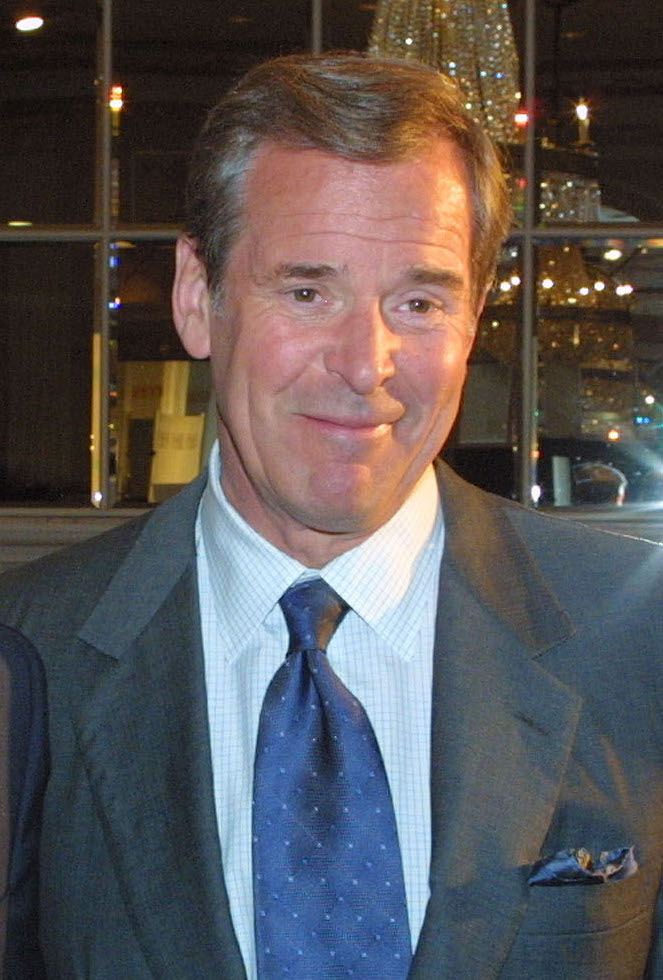
Peter Jennings at the 61st Annual Peabody Awards Luncheon, in 2002. Photo credit: Anders Krusberg / Peabody Awards
These dangerous forms of misinformation do more than threaten our ability to determine facts from falsehoods; they also threaten our culture. This through line became clear during a panel discussion titled “Truth in Our Time” held in New York City this month as part of a commemoration of the late journalist and ABC Evening News anchor Peter Jennings. David Muir, the network’s current news anchor, moderated the conversation, which featured Javier Hernández, a culture reporter at The New York Times; Gillian Tett, editor-at-large, U.S., of the Financial Times, and Alexander Shelley, music director of Canada’s National Arts Centre Orchestra.
The Centre sought to honor Jennings, a native of Canada, for his commitment to reporting the truth, and commissioned a work by composer Philip Glass for the event. Glass’ Symphony No. 13 had its U.S. premiere at Carnegie Hall the evening of the panel discussion. Muir, who worked at ABC News during Jennings’ tenure, said the day’s theme evoked the iconic journalist’s character and values. “Peter Jennings had a devotion to the truth, to fact-checking,” he said.
‘What is truth, what is the role of culture?’
Muir began the afternoon’s discussion by asking, “How can we try breaking through the competing forces of what is news, what is the truth, what is the role of culture?”
Tett, who was a Ph.D. student living in the Soviet Union in the 1990s during the Tajikistan civil war, saw firsthand how totalitarian governments silence dissension and terrorize citizens. “I got that knock on the door at midnight when the KGB went house to house,” she said. One family she knew held on strongly to their culture throughout the upheaval. “They used music to express their creativity and communicate from East to West at the intersection of the Silk Road,” Tett said. “Music can be a bridge. And I hang onto the hope that music can be a bridge.”
Hernández described how, in addition to news reporting, music and culture can tell the stories of people living through war and oppression. “It’s about the power of the individual, the power to connect people, shine a light on the truth,” he said, recalling how a musician once told him, “I play my music because music reminds me that we are all human.”
Hernández said this underscores how suppression of free speech directly impacts the arts. “Any attack on free press and journalism is an attack on musicians, books, music,” and all arts and culture.
Because art, like journalism, can express the truth, understanding that both play important roles in upholding a free society gets at the heart of news literacy. And it underscores why being news-literate matters more than ever.
Historical perspective
Previewing the evening’s concert, Shelley said that Glass “jumped at the chance” to write a symphony on the theme of truth, with other works in the program also addressing the impact of autocratic regimes on culture from a historical perspective. The Violin Concerto by Erich Wolfgang Korngold was written in 1945, after the composer, an Austrian Jew, fled the Nazis. “He wrote this piece when the Nazis fell and wouldn’t write it beforehand. It represents the scales falling from the eyes,” Shelley explained.
During this same time, Soviet dictator Joseph Stalin asked composer Dmitri Shostakovich to write a patriotic piece to mark the end of World War II. Given the crimes of the regime, Shostakovich felt he could not write something patriotic, Shelley said. Instead, he wrote something very different. “This piece is sardonic, sarcastic. It speaks to the feeling of living in tyranny.”
The night’s encore, a late addition to the program, brought the audience back to the present and the deadly war in Ukraine. “We Do Exist” was written by Ukrainian composer Yuri Shevchenko based on the country’s national anthem. The selection acknowledges what is happening in Ukraine in a way that made it terribly real. Shevchenko died of pneumonia in a Kyiv basement last month, as the city prepared for a possible attack by Russian forces, Shelley told the audience.
NLP introduces “Power in Art,” a new lesson on editorial cartooning
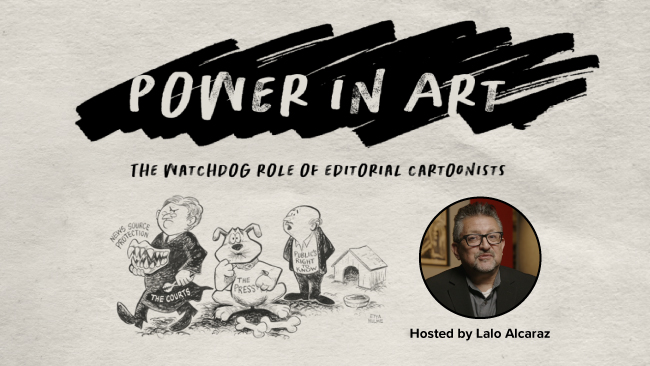
Editorial cartoonists are known for their masterful, often trenchant use of images and text to express opinions or provide critique. Sometimes their work even propels national conversation or social change.
Now, students have a chance to explore the formidable history and impact of editorial cartoonists through a new, comprehensive Checkology® lesson, “Power in Art: The Watchdog Role of Editorial Cartoonists.” The lesson is included with the News Literacy Project’s free Checkology virtual classroom and is currently available to all educators. (You can preview the lesson here. To assign this to students, log in to or register for Checkology.)
“Editorial cartooning is a fascinating, complex form of opinion journalism, and we are very excited to incorporate this lesson into Checkology,” said Peter Adams, NLP’s senior vice president of education. “Guided by our subject matter expert, the award-winning editorial cartoonist Lalo Alcaraz, students trace the role of editorial cartooning through history and gain valuable skills for analyzing and interpreting these powerful drawings, as well as other modern forms of graphic expression. With its international, multidisciplinary scope, this lesson would make a great addition to many course curricula, including social studies, history, journalism, media studies and art.”
The lesson provides an in-depth look at how the work of editorial cartoonists has held those in power accountable, as well as the characteristics and challenges of this important form of opinion journalism. Students analyze cartoons from around the world, with iconic examples from Benjamin Franklin, Charles Philipon, José Guadalupe Posada and others. The lesson also invites students to compare editorial cartoons with modern forms of graphic political expression, including memes.
Alcaraz, whose work has appeared in newspapers across the United States, Mexico and around the world, and the winner of the 2022 Herblock Prize for editorial cartooning, hosts the lesson.
Learning objectives of “Power in Art” include:
- Identifying the primary elements of an editorial cartoon and how they work together to express an opinion.
- Summarizing how editorial cartoons have held people in power accountable.
- Distinguishing between functional and harmful representations of groups in political cartoons.
- Analyzing and interpreting an editorial cartoon, including identifying opinion versus observation.
- Being able to describe why diverse voices and perspectives matter in editorial cartooning.
- Being able to explain how modern forms of graphic political expression compare with editorial cartoons.
“Power in Art” is the 15th lesson in NLP’s browser-based platform, which teaches students how to navigate the digital landscape by developing news literacy knowledge, skills and habits of mind.
This lesson was made possible with support from The Herb Block Foundation and the Association of American Editorial Cartoonists (AAEC).
The Moore family and NLP: A leap of faith and a legacy gift
In January 2009, philanthropists David and Katherine Moore took a leap of faith in me and the News Literacy Project when they became one of our first individual donors, despite the fact that we had yet to provide a single classroom lesson.
The Moores have been part of the NLP family ever since, making annual donations without fail. Following David’s death in 2011, Katherine took up our cause. This year, at her behest, the family gave NLP an exceptionally generous $500,000 advanced bequest to create an endowment. David’s and Katherine’s son, Richard, delivered the news.
“The News Literacy Project has been extremely important to my father and mother,” he said. “As a result, my mother wants to provide this special gift.”
NLP is using the funds to launch The David and Katherine Moore Endowment. This is a cornerstone of NLP’s newly created Legacy Society to recognize and thank those who are including NLP in their estate planning.
I’m tremendously grateful for the Moore family’s deep commitment to news literacy, and for the deeply meaningful friendship that David and I shared. Here is our story.
The first time I met David, I asked him for money.
“Alan,” he responded, seemingly taken aback, “This is our first date. You can’t ask for money yet!”
The year was 2008. Following a 29-year career as a journalist, I had just launched NLP. I had a lot to learn. David was one of those who would teach me.
As it turned out, this would be the first of many memorable lunches with David at the stately Harvard Club in midtown Manhattan, following an introduction by a family friend. It would also be the last time that David would decline my request for money.
In the years that followed, as David and I became friends, I relished our encounters.
Then in his mid-80s, David took the train in from a New York suburb for our lunches and other events as an active member of our New York advisory committee. He and Katherine visited our first high school partner in New York’s Hell’s Kitchen to watch David Gonzalez of The New York Times, who was our initial volunteer journalist fellow, alternate between English and Spanish as he powerfully connected with the students.
David Moore’s support was profoundly meaningful for another reason: He was the grandson of Joseph Pulitzer (I won the Pulitzer Prize for National Reporting with the Los Angeles Times in 2003).
With journalism in his blood, David did it all: He worked as a reporter; he founded an independent weekly and a magazine; he served as editor-in-chief of two publications, and he was active on the board of various journalism nonprofits. Among his most cherished causes were ethnic community news outlets and the Pulitzer Center for Investigative Journalism.
In NLP, David saw a chance to make a difference by building an appreciation for journalism and by educating the next generation, particularly in New York’s underserved communities.
David was invariably sharp, inquisitive and engaged. In 2010, he showed up for lunch with a copy of a long story about NLP. He had circled a reference deep in the piece about our plans to build upon our initial classroom program to create a digital unit and begin to move to scale.
“Why didn’t you tell me about this?” he asked. Another lesson: No surprises for David.
When David died in 2011 the age of 88, Katherine took up the NLP mantle in his honor. In 2014, she increased the family foundation’s yearly gift to NLP from $25,000 to $35,000, for an annual giving total of $445,000 since 2009.
I believe David would be extremely proud of how far NLP has come since that first lunch in 2008. The family’s most recent gift underscores that the project, and its growing impact, will be around for a long time to come.
Miller transitioning to new role; Salter to succeed him as CEO
Since its founding in 2008, the News Literacy Project has embraced change and adaptability to become the leading provider of news literacy education in the nation. Now, with our mission more urgent than ever, we embark on a new era with a major shift in our organization. On June 30, NLP founder and CEO Alan C. Miller will step down as CEO and transition to a new role within NLP, while our President and COO Charles (Chuck) Salter will succeed Alan as CEO on July 1. Salter also will retain the title of president, ensuring a seamless transition and continuity for the organization.
NLP’s place as a game-changer in news literacy education is the result of Alan’s vision, passion and commitment. As a founder of the field of news literacy, he helped raise more than $35 million for NLP and oversaw its growth to a team of 30 staffers. (Hear Alan tell the story of NLP’s founding in this video.)
Since 2016, more than 345,000 students have used NLP’s Checkology® virtual classroom, and the organization has engaged over 50,000 educators in all 50 states and more than 120 other countries. All told, educators using NLP resources and programs in the last year reached an estimated 2 million students.
Chuck joined NLP in 2018 as its first chief operating officer and was named president in 2019. Prior to joining NLP, he spent nearly two decades in education — often working to advance opportunity in under-resourced communities — as a teacher, school leader, teachers union president and senior executive with several national education organizations. Read this Q and A with Chuck to learn more about the experience and expertise he brings to NLP.
NLP is poised to take on a more significant national presence as more school districts begin requiring news literacy education and as it continues to expand its work to reach adults. This strategic direction will enable NLP and its staff to focus on teaching people of all ages the news literacy skills they need to fully engage in the civic life of our country in meaningful and informed ways.
NLPeople: Chuck Salter, president and CEO
This is part of a series that introduces you to the people behind the scenes at the News Literacy Project.
Chuck Salter
Washington, D.C.
- Can you tell us a little about your background and what brought you to NLP?
My father was an Army officer drafted during Vietnam, and both my parents were in the medical field. I’m the youngest of three sons. Both the small size of our family and the experience of moving so often when I was younger helped us become incredibly close as a family. My parents instilled in me a sense of service that has defined my professional life. I discovered in college as a tutor, TA and music instructor that I really enjoyed teaching. I was accepted into Teach For America in 1997, and my career path was forever altered. And 20 years later, I found myself moving back to the D.C. area to work with NLP. - Since joining NLP, what has been the most satisfying or surprising experience?
I’ve really enjoyed learning about a whole new field: journalism. As a news junkie, I was surprised to learn how ignorant I was about the profession, how news is made and the challenges the field faces every day in living up to its highest standards. I keep this in mind to give me perspective and empathy for those we serve — remembering that even the most “informed” among us may not understand what it truly takes to be a free and responsible press. - You’ve had different jobs throughout the education sector. What makes NLP different from the others?
I’ve been a teacher, principal, superintendent and teachers union president. And I’ve worked as a regional manager and national leader for several educational nonprofits. I’m not sure I could imagine doing anything else. But in my 20 years of work before coming to NLP, my efforts were focused largely on serving marginalized communities, working for that still-elusive goal of educational equity for all. At NLP, our focus is on a singular issue that affects all students, regardless of demographics, geography or social status. So while the focus of the work is much narrower, the scope of its impact is far, far broader than anything I’ve done before. - Aside from fighting for facts, what else are you passionate about?

My work at NLP is a perfect combination of the issues I’m most passionate about: education, democratic participation and even civil rights. I do believe education is the foundation to all other agency and opportunities someone can have to reach their best selves. And a strong, representative democratic system is the best way for fully realized people to control their destiny. With regards to civil rights, as a member of the LGBT+ community, I’d say this is my most personal passion. Beyond simply allowing people to live their lives on equal terms with others, I don’t understand the hatred some people hold for others based on personal characteristics. On one level, I know it’s rooted in fear and misunderstanding, but the origin of such passionate hate some people exhibit toward others not like them — and all the other bad behavior that then excuses — will always be a mystery to me. And a source of personal sadness. But on a less serious note, I’m also pretty crazy about cooking, traveling, photography and, most recently, gardening. - You’ve lived many places and done a great deal of traveling. Any favorite places or highlights?
Without getting too sentimental, I consider it a great privilege to have lived all over this country. It’s given me an appreciation for and a heightened sense of patriotism toward the United States, even without really having a place to call my “hometown.” I would not dare compare regions or cities here — they all offer something unique and wonderful. Outside of the country, my favorite city, hands down, is London. I got married in May, and the first part of our honeymoon was a return trip to London. I’ve even considered living there a couple of times. But probably the two most wondrous places I’ve traveled to are Italy and South Africa, though I admit I’ve still got a few more continents to visit before I can declare my definitive favorite. - Are you on team dog, team cat, team wombat?

As a member of ASPCA for many years now, I think animals in general are great and deserving of much more respect than a lot of people give them. And I certainly understand the deep joy a pet can bring to someone. But since you asked me to vote, while I do love so many kinds of dogs, I really have to say I’m a cat person through and through. Our cat, Erasmus, is 19 years old (I got him in law school!) and truly part of the family.
Students empowered to push back against social media algorithms
While teenagers might annoy adults by questioning everything around them, their pushback can be a good thing. This is especially true when young people have the skills and abilities to make informed judgments. Educators who use the NLP’s Checkology® e-learning platform see this when students challenge social media algorithms that skew their view of the world.
“Just being aware of online personalization gives them some power to resist,” educator Mary Kate Lonergan said. She teaches eighth grade social studies at Eagle Hill Middle School in Manlius, New York.
Lonergan uses a variety of resources to give students a strong foundation in news literacy. They can then apply what they’ve learned when researching a controversial issue during a cross-curricular social studies/ELA project. The students soon discover how algorithms determine what content they see. Middle school students understand that their TikTok feed looks different from a classmate’s feed, based on the ads they click or topics they search, she said. However, they are surprised at how fast algorithms can send them deeper into a rabbit hole, narrowing their view. “They don’t have the concepts to identify what’s happening.”
Illustrating pitfalls of algorithms
Lonergan’s students demonstrated their grasp of the topic by creating memes that addressed the pitfalls of algorithms. Using humor, well-known people and animated characters, they conveyed the insidiousness of personalized ads, online privacy issues and filter bubbles.
“Creating media is an important piece of news literacy. It demystifies the process, and they can see that intentional choices are being made — content has a purpose,” Lonergan said. “If you understand how this works, you can’t be taken advantage of.”
Her students reflected on their discoveries:
- “Whenever I am on social media I can identify when I have fallen into rabbit holes and be able to stop myself from getting sucked in too much.”
- “This project opened me up to making sure that I use social media for its benefits, so that it can help make me — not break me.”
- “What’s important to know is that echo chambers that you find yourself in can be good on one side and bad on the other, and companies profit off of that.”
How algorithms and technology impact our lives
Similar discoveries are taking place nearly 1,000 miles away in Kerise Broome’s 10th grade English honors class at James Island Charter High School in Charleston, South Carolina. Her students start the year by studying the role of technology in their lives. “I truly feel that we’ve got to make up some ground where technology evolved too quickly, and we weren’t teaching news literacy as part of our standard curriculum,” she said.
She challenges her students to write essays that address the following questions: In what ways do you see that technology is outpacing our ability to control it and presenting us with threats to our existence? What can we do to solve these problems?
“The overwhelming majority of them are looking at online personalization the way most adults are looking at it,” she said. “They feel like victims and that they are the product. They don’t like that idea at all.”
‘They do understand what the dangers are’
To give them the content knowledge needed to answer those tough questions, Broome uses a combination of resources and methods. This includes the Checkology lessons “InfoZones,” “Misinformation” and “Understanding Algorithms,” the documentary film The Social Dilemma, and peer-to-peer class discussions. “A lot of the information was surprising to them, but they do understand what the dangers are,” Broome said.
The essays were excellent, she said, because of the students’ knowledge, interest in and engagement with the topic. They also shared thoughts on how to address the challenge of navigating the information landscape.
Some of their insights:
- “Checking multiple trusted websites instead of using social media as our main source of information is a way we can help solve the problem of receiving incorrect information about important topics we should be correctly educated on.”
- “Social media has implemented a special way to take and keep our attention, by using our interests and goals and showcasing them in our personalized feeds.”
- “The best thing you could do in order not to get caught up [in conspiracy theories] is to [do] your research! Fact check! If you see something on social media that you know or think is fake, don’t repost it.”
Lessons resonate
Broome has seen how teens value the skills and insight that becoming news-literate brings. “It just really echoed some of the things they have seen. It’s the most relevant thing I teach all year long,” she said.
Lonergan weaves news literacy into her curriculum throughout the year and believes it’s never too early to start. “Middle schoolers are ready for these conversations and want to talk about it,” she said. “News literacy is the vehicle through which we engage in the content. It’s not another thing to teach; it’s another way to teach.”
Using the news to develop students’ critical thinking
By Pamela Brunskill
Students today are immersed in a news and information landscape that pervades every aspect of their lives. From TikTok to Instagram to Twitter, they are inundated with posts, and many of them are not credible or legitimately grounded. It is difficult to know what is true. Because this environment is complex and riddled with misinformation, it provides a prime opportunity to authentically develop students’ critical thinking abilities.
Critical thinking defined
One of the most highly sought goals of educators is to get students to think critically. In a rough sense, this involves the skills and dispositions necessary to make an informed judgment. According to a meta-analysis on the subject, critical thinking is purposeful, methodical, and habitually inquisitive. Critical thinkers have the skills to interpret, analyze, and evaluate content; they are diligent and persistent in considering a question, and they approach life honestly and with an open mind.
While there is some debate whether the best approach to teaching critical thinking is through generic traits or through discipline-specific skills, a compromised approach allows students to develop both. If we follow the belief that students need context to accurately reason about a subject, then they must have some background knowledge in that subject. How else can they think critically about something? Further, how would that naive thinking compare to that of experts in the field? Regarding the news and information landscape, if students are going to think critically and be discerning with the content they share, then they must learn news literacy.
How to use news literacy to teach critical thinking
Step 1: Develop disciplinary literacy in the news
In an era of misinformation, students can evaluate information by learning how news is made. This includes explicit instruction in concepts and content such as identifying different types of information, recognizing the purpose or intent of pieces, understanding the watchdog role of the press, and recognizing quality arguments and evidence. It also includes explicit instruction of skills such as evaluating sources, identifying branded content, recognizing bias and motivated reasoning, and verifying evidence. Of course, students also need to demonstrate understanding of these concepts and practice these skills. In so doing, they gain disciplinary literacy, the notion of specialized reading practices for a field of study. Often, disciplinary literacy is framed as thinking like a mathematician, a historian, or a computer programmer. Regardless of the content area, students gain greater depth in their understanding of the underpinnings of that discipline. In this case, students learn to “think like a journalist.”
Example of developing disciplinary literacy: Jennifer Liang Twitter thread
Step 2: Teach topical content
Once students comprehend how news is made, they can deconstruct it and analyze its creation. But they also need the context surrounding the piece of news they’re reading and/or studying. To this end, teachers should provide explicit instruction in the topic at hand, whether it involves immigration, global warming, sports, health, statistics, or any other content area. This is where each discipline offers its own guidance, and as with all good teaching, this requires an effective approach to tackling reading comprehension. This might include studying vocabulary, writing about text through think sheets and short responses, and discussions, among other strategies. Then, students can explain a disciplinary concept such as immigration and explain why not all images of border walls are accurately portrayed in memes.
Why news literacy?
Of course, integrated studies between all subjects are possible, but there is a special partnership between English and social studies in relation to news literacy. The stakes are high: think about the consequences of misinformation as well as the potential for civic action. A lack of news literacy threatens democracy and our public health — just look at the conspiratorial thinking that led to the Capitol riots and erroneous claims about COVID-19. Conversely, when individuals have the competency to judge reliable and credible news, they can take civic action such as correcting a piece of misinformation, contacting elected officials, and participating responsibly in political discussions. Being accurately informed is crucial to participating in a democracy.
Example of disciplinary-specific content: Conspiratorial Thinking poster
Critical thinking is critical in today’s world
Using the news in classrooms can authentically develop higher-level thinking skills and dispositions. Combining understanding of how journalism works along with topical content allows students to determine the credibility of information they encounter. This integration enables students to interpret, analyze, evaluate, explain, and make judgments — to think critically. By teaching news literacy, we can teach students the skills and habits of mind to not only navigate today’s information landscape, but also to navigate our society.
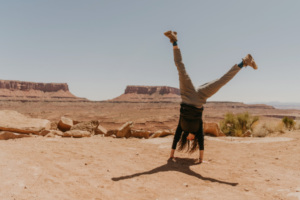 5. Aside from fighting for facts, what else are you passionate about?
5. Aside from fighting for facts, what else are you passionate about?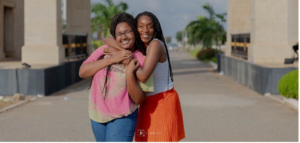 3. Aside from fighting for facts, what else are you passionate about?
3. Aside from fighting for facts, what else are you passionate about? 4. Are you on team dog, team cat, team wombat? Or do you prefer stuffed animals to pets?
4. Are you on team dog, team cat, team wombat? Or do you prefer stuffed animals to pets?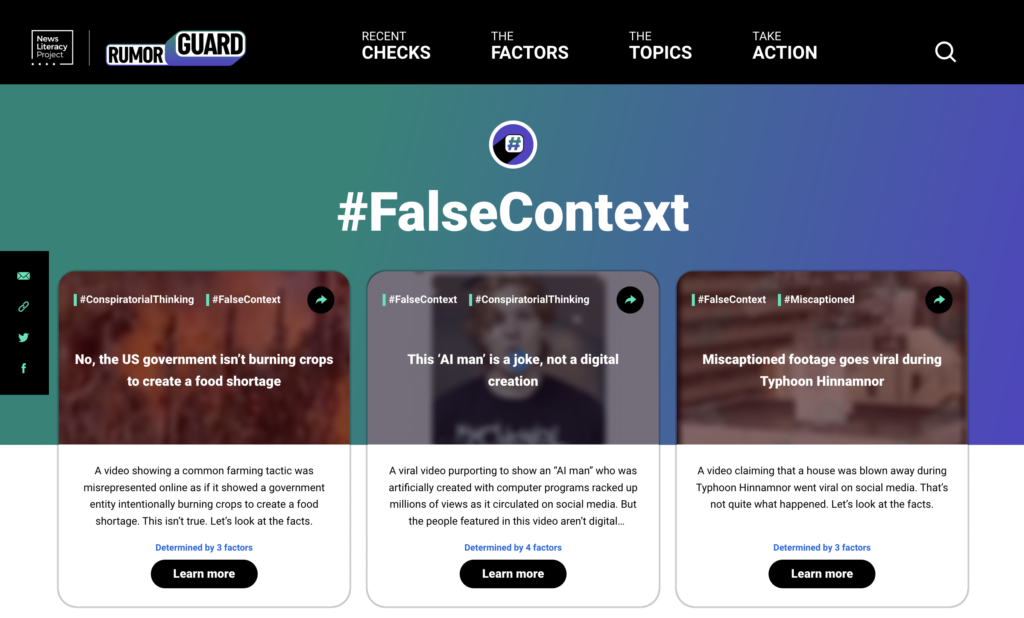
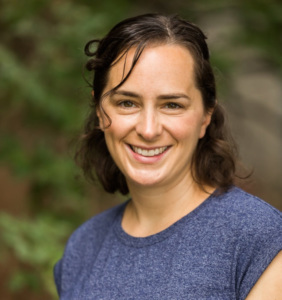 1.) Can you tell us a little about your background and what brought you to NLP?
1.) Can you tell us a little about your background and what brought you to NLP?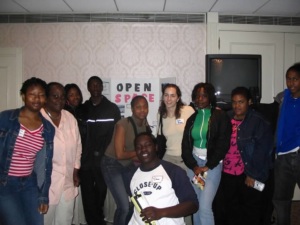 2.) How has your Teach for America experience working with students in underserved areas informed your work at NLP?
2.) How has your Teach for America experience working with students in underserved areas informed your work at NLP?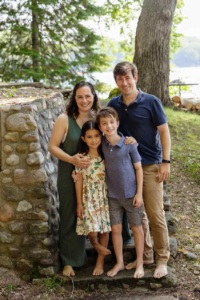 4.) You have young kids; do they understand NLP’s work and your role?
4.) You have young kids; do they understand NLP’s work and your role?